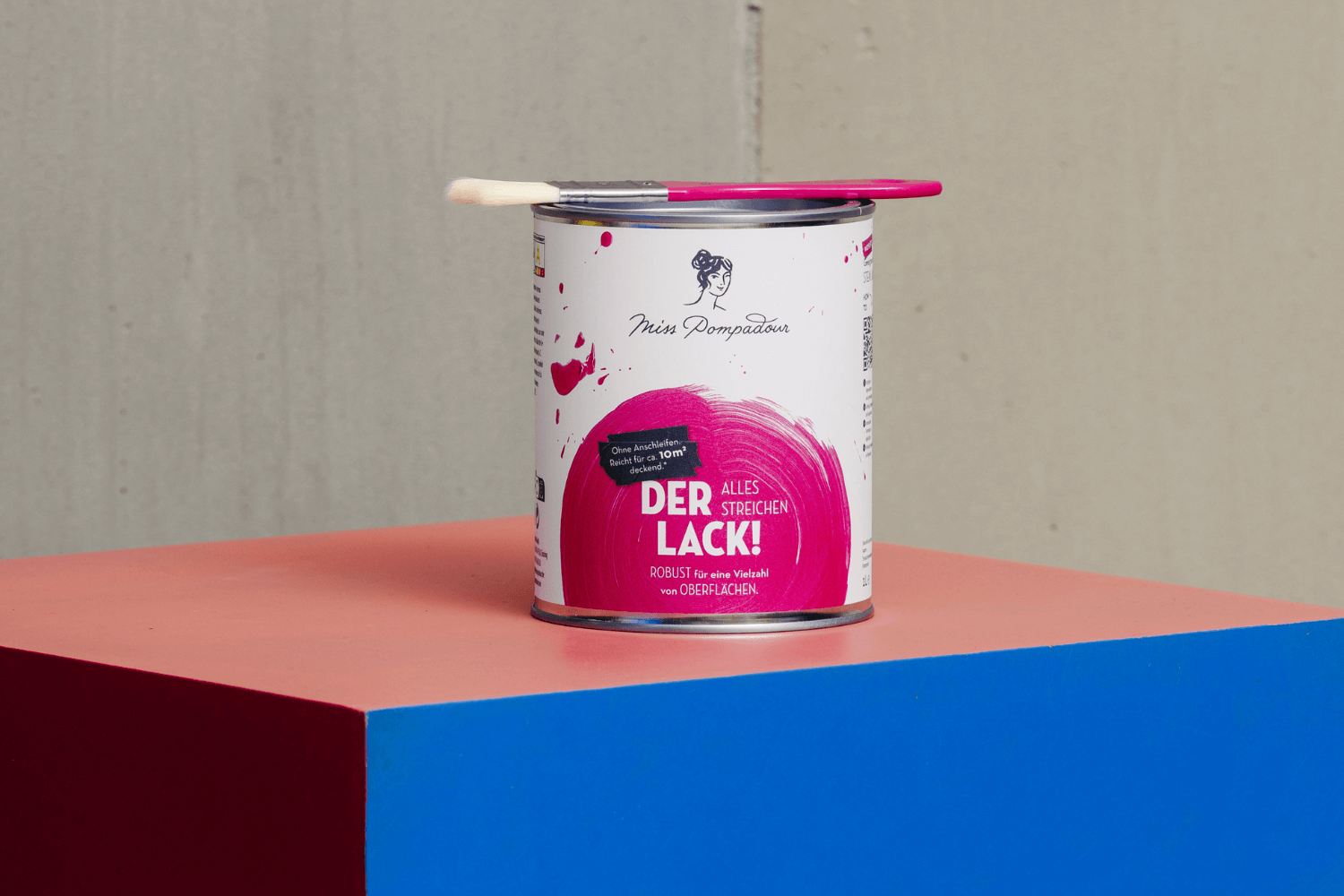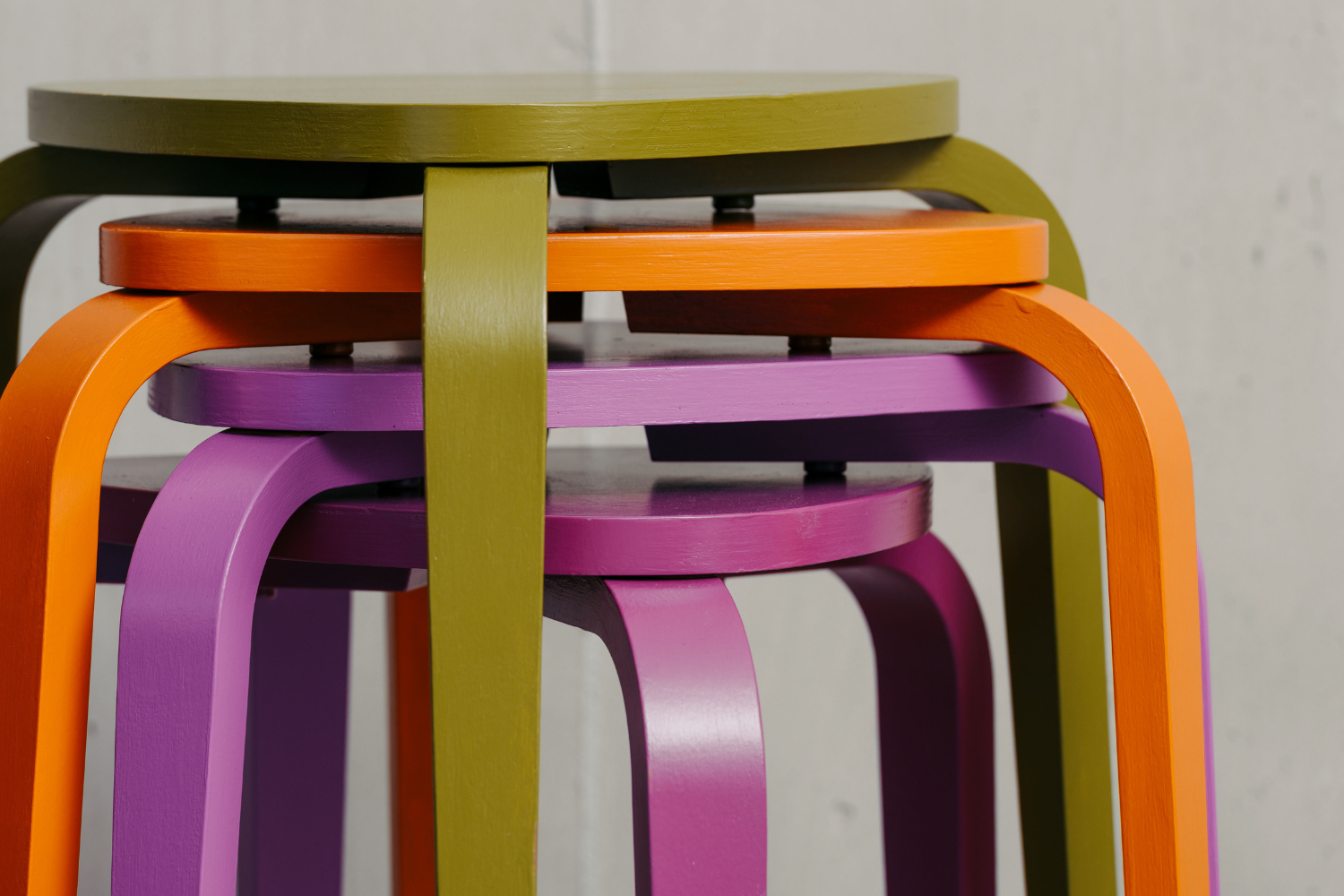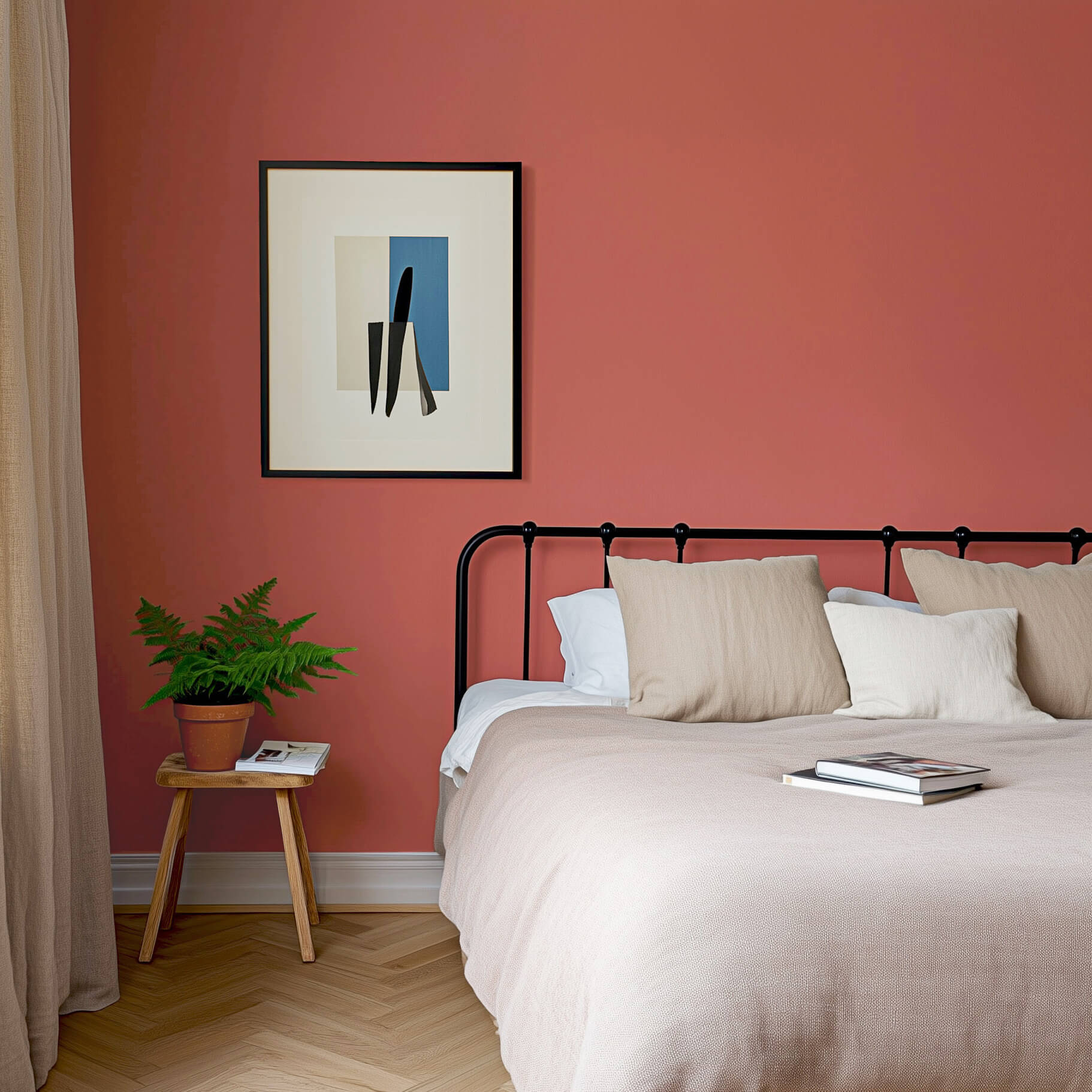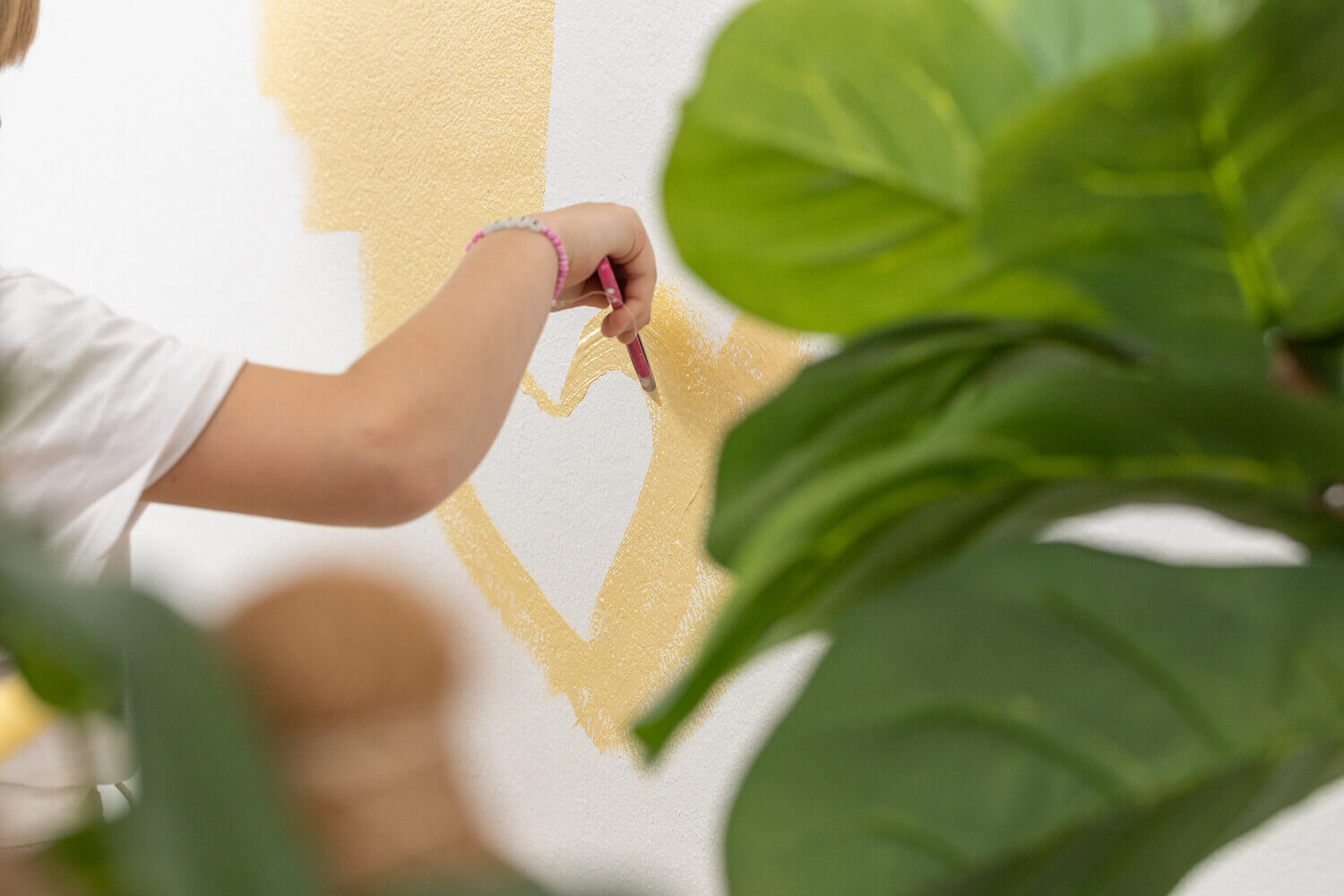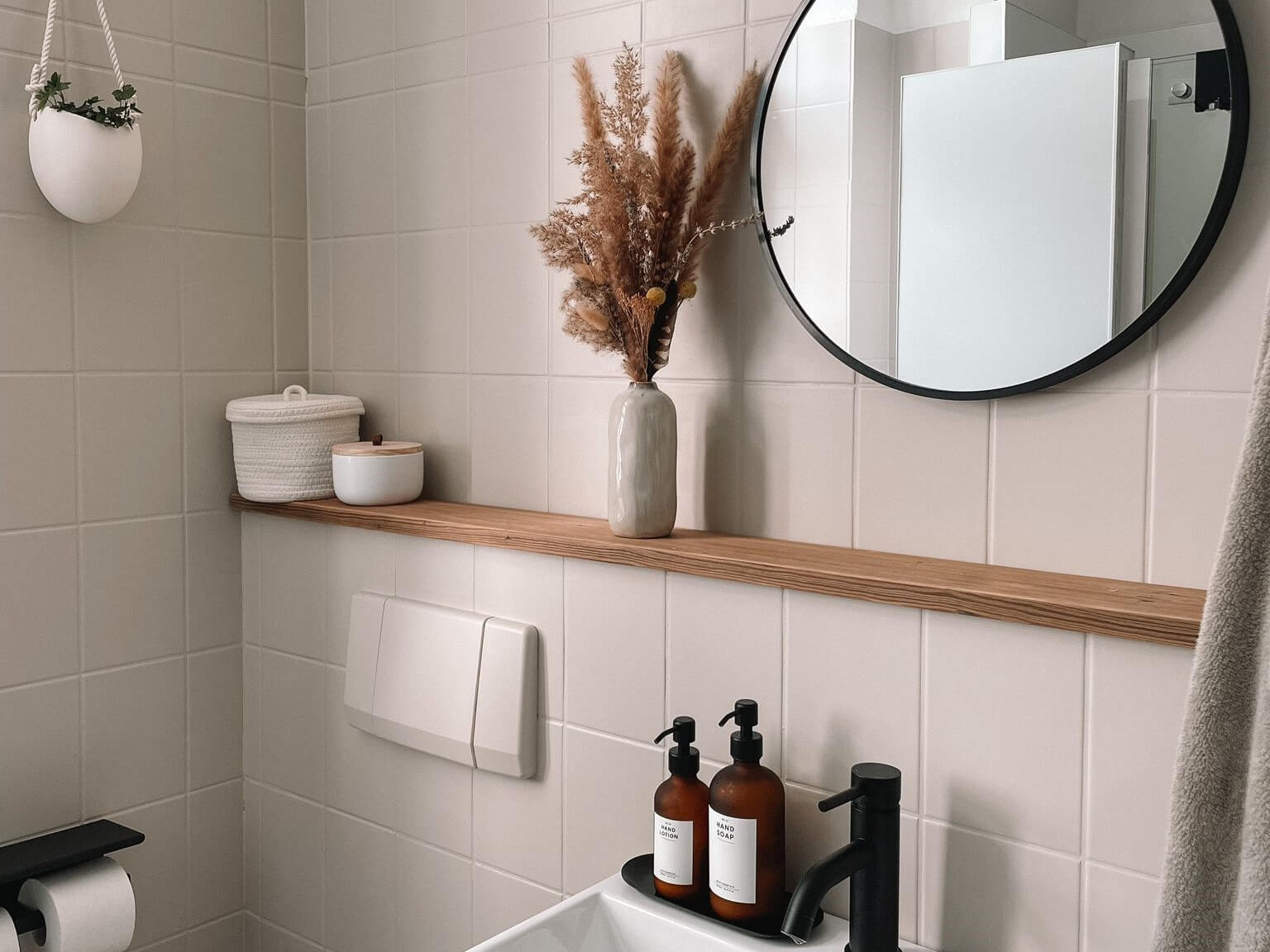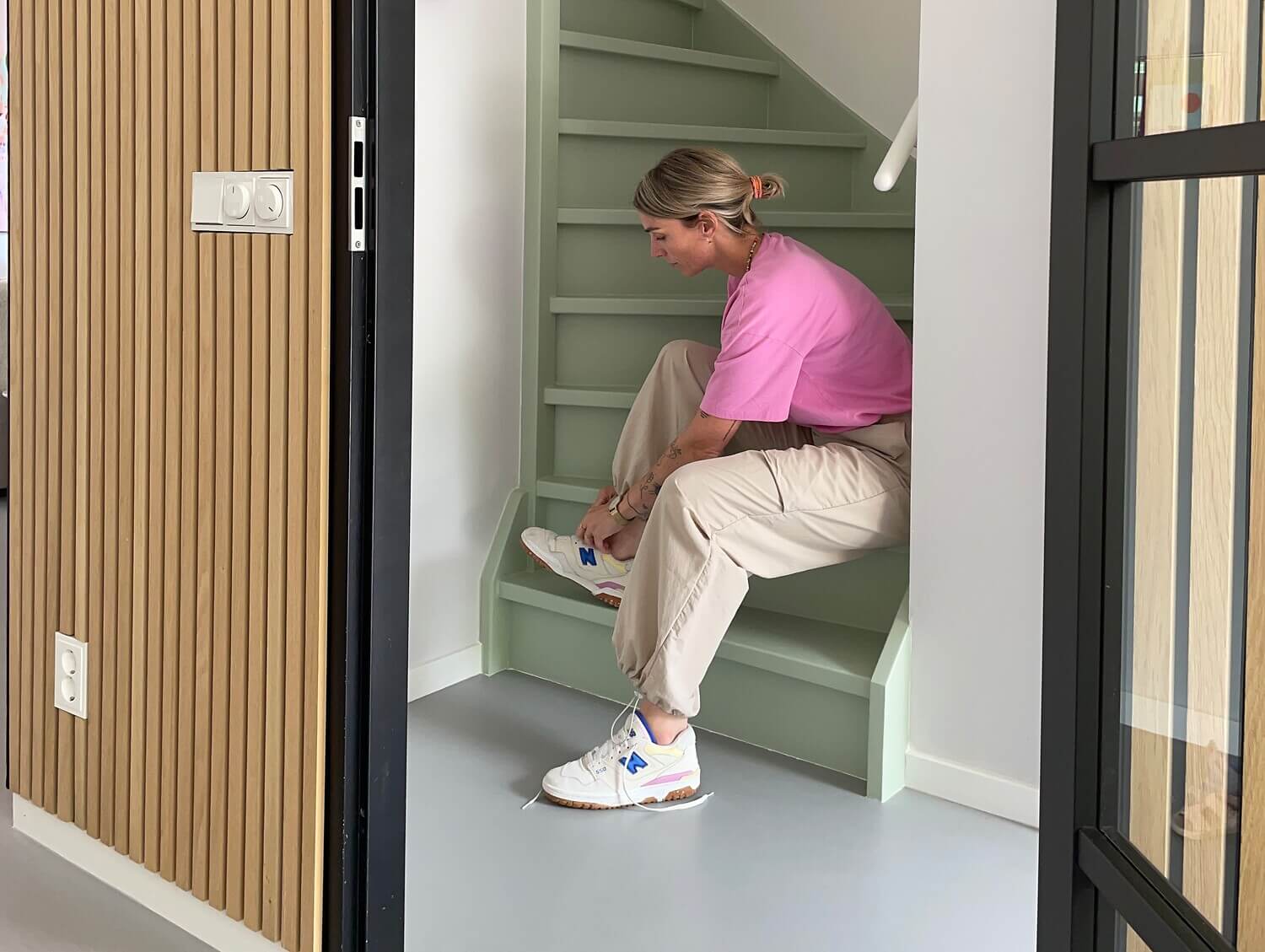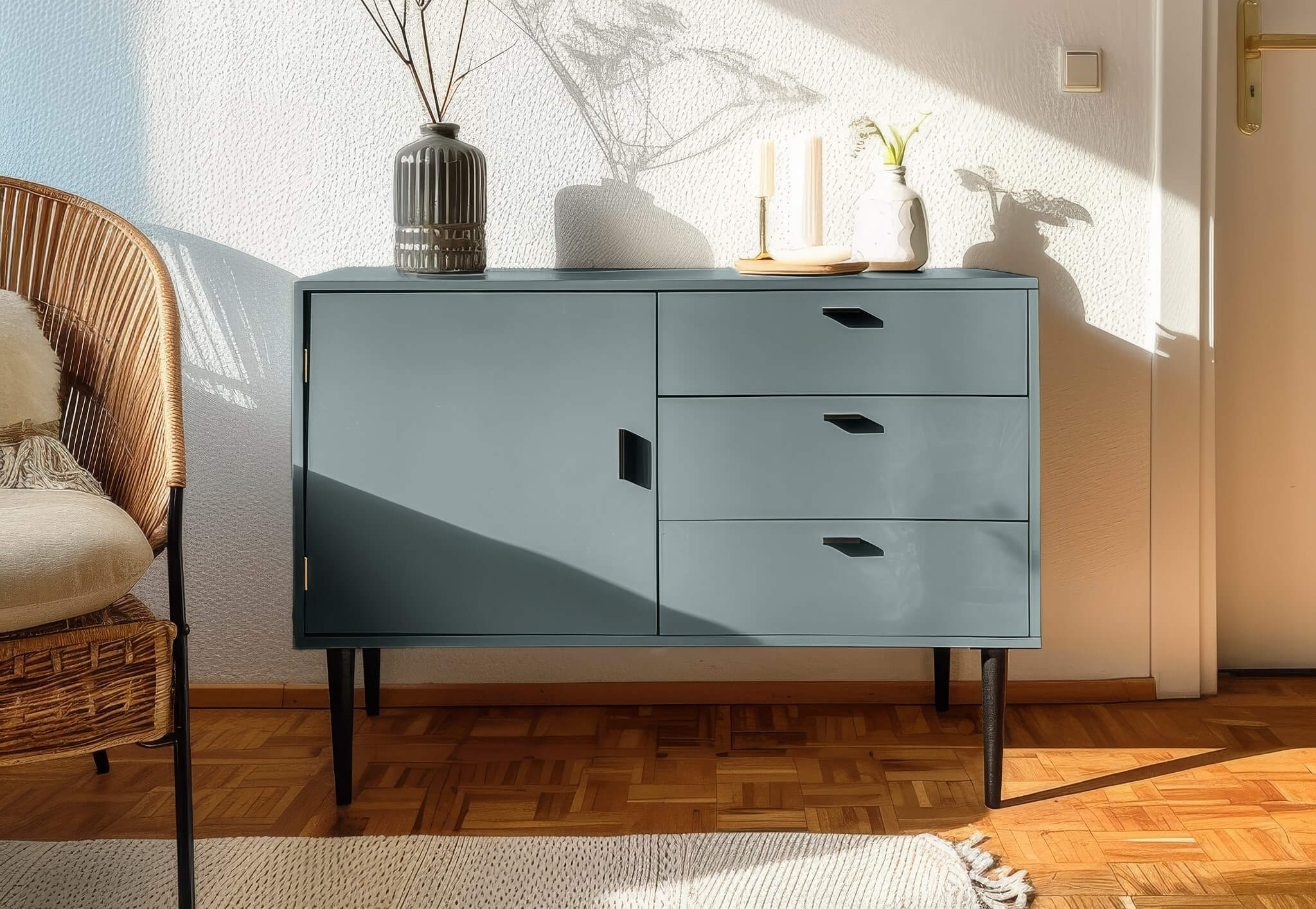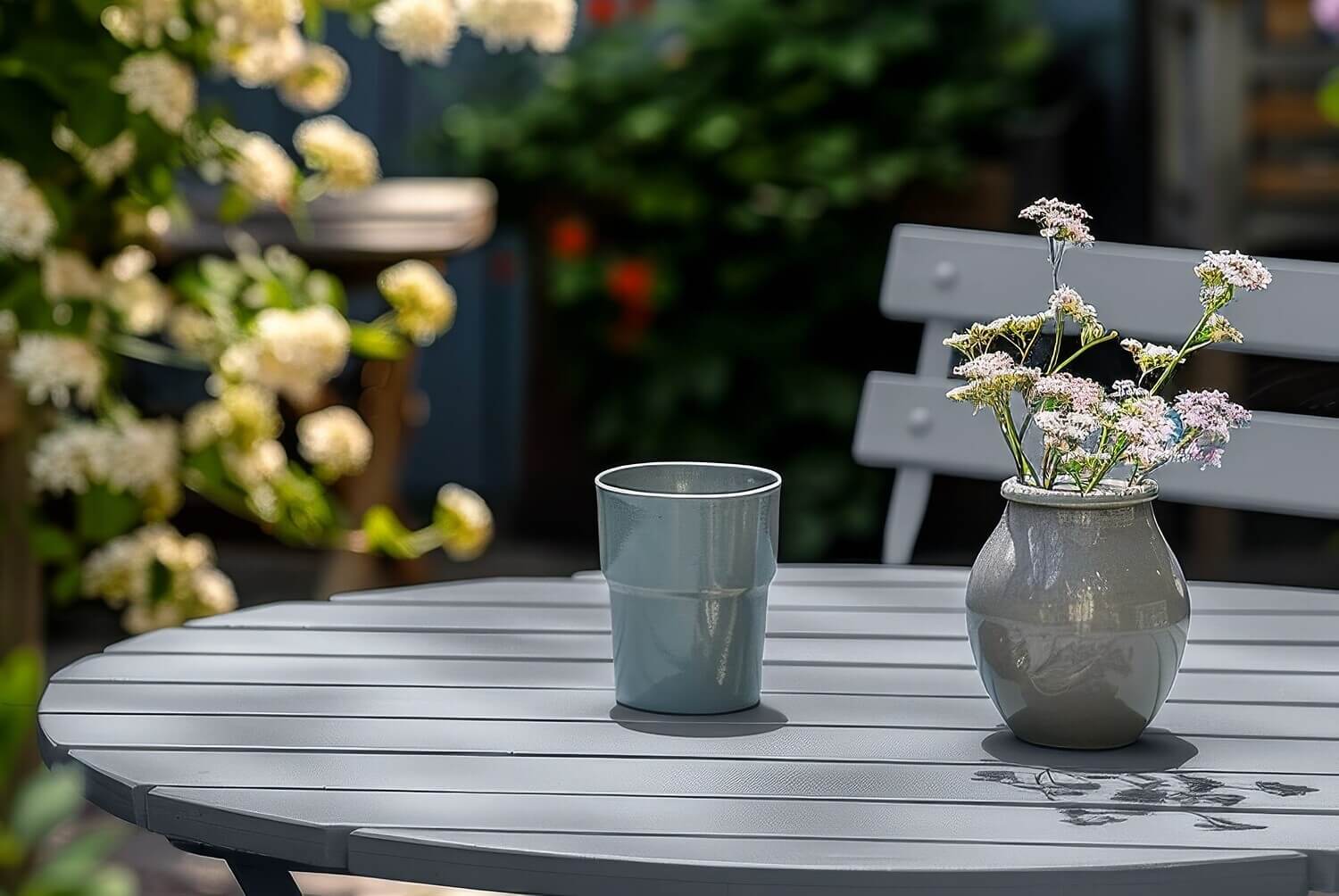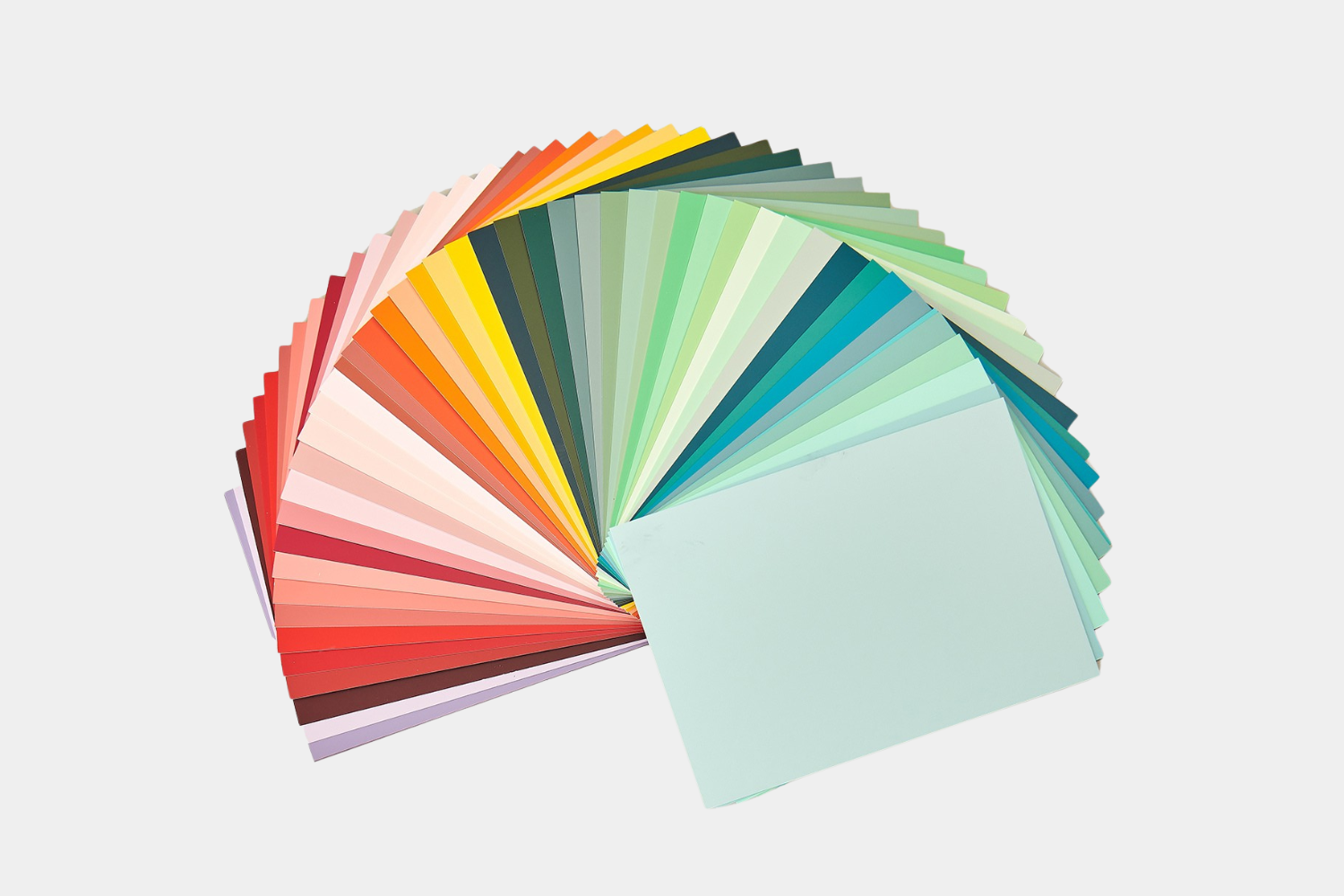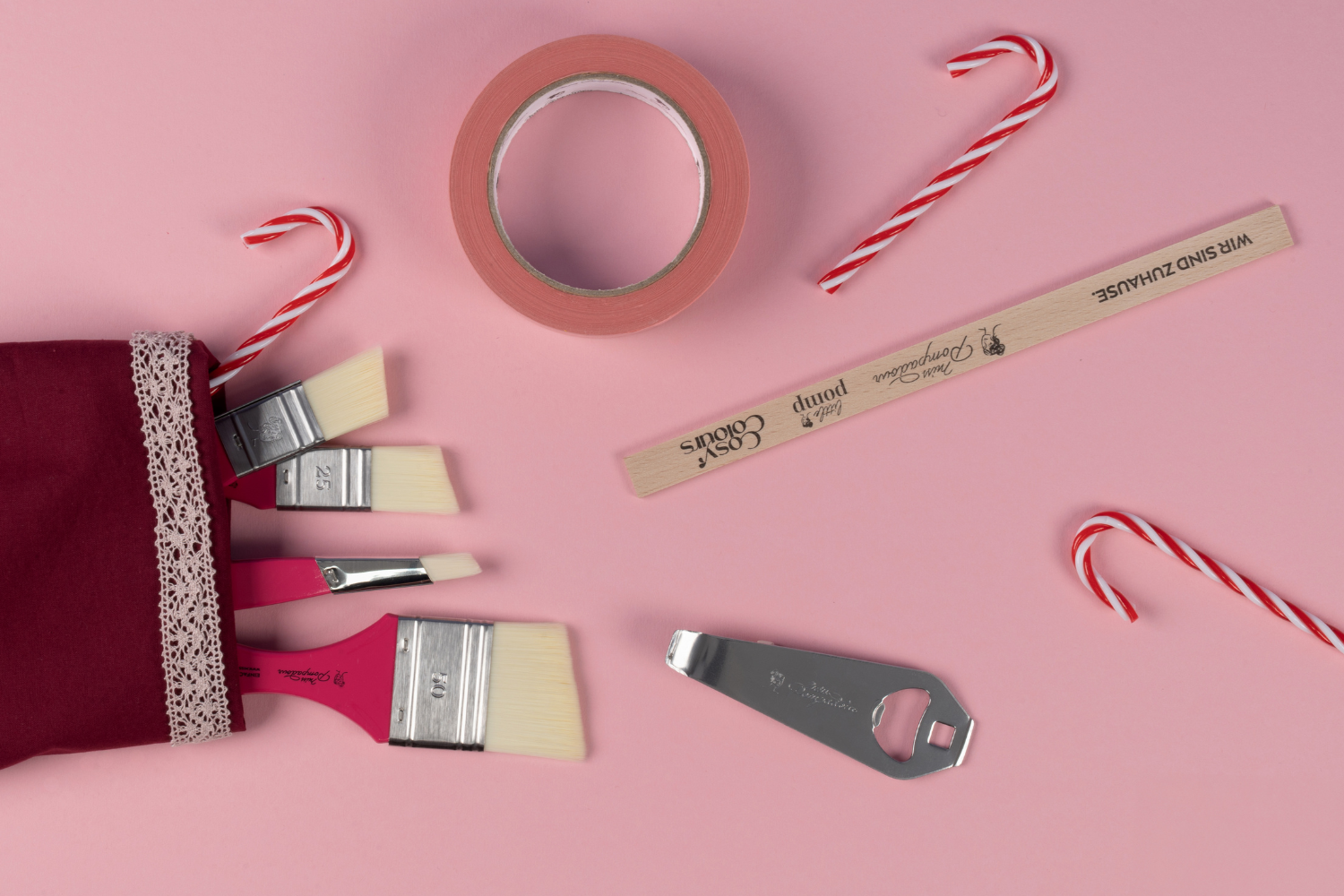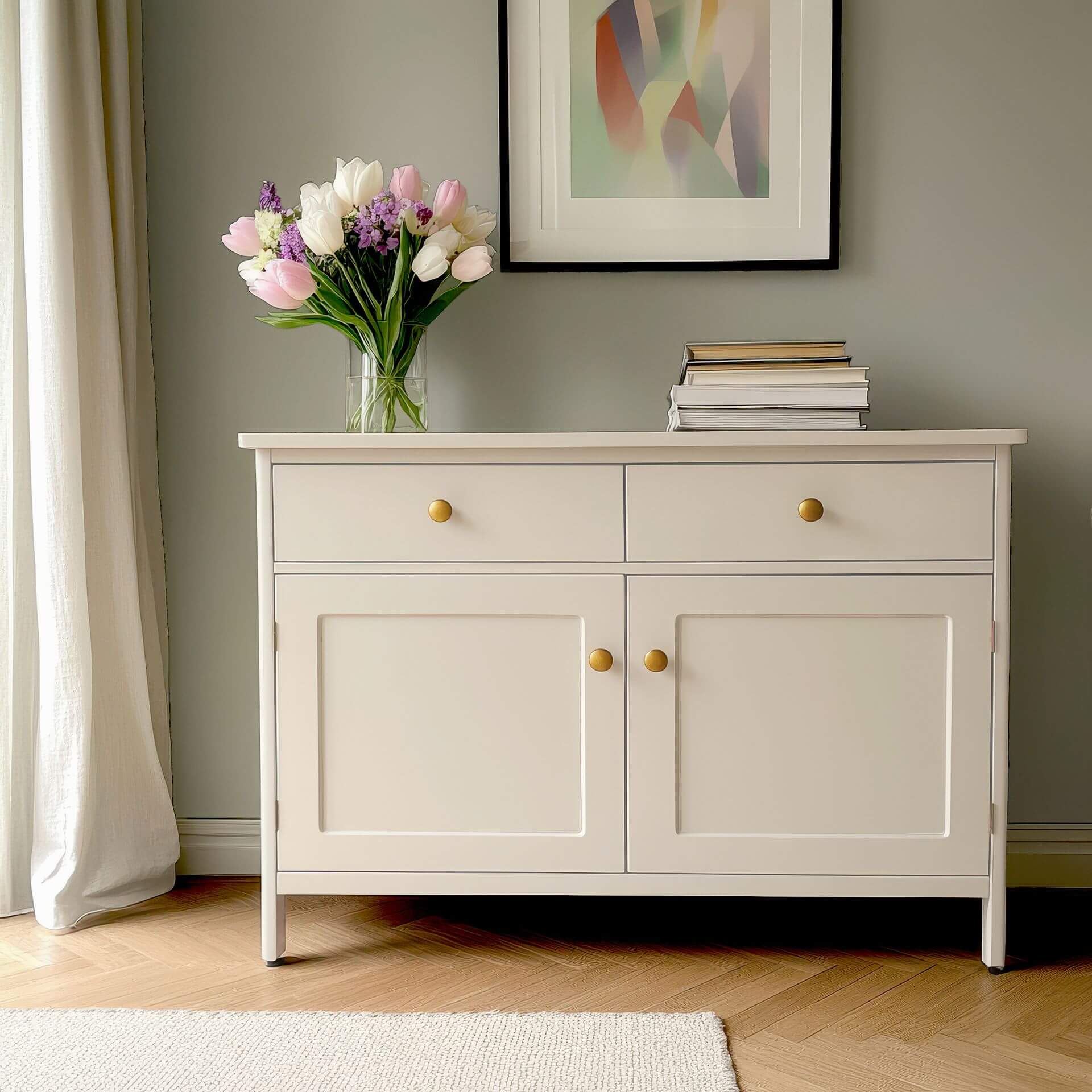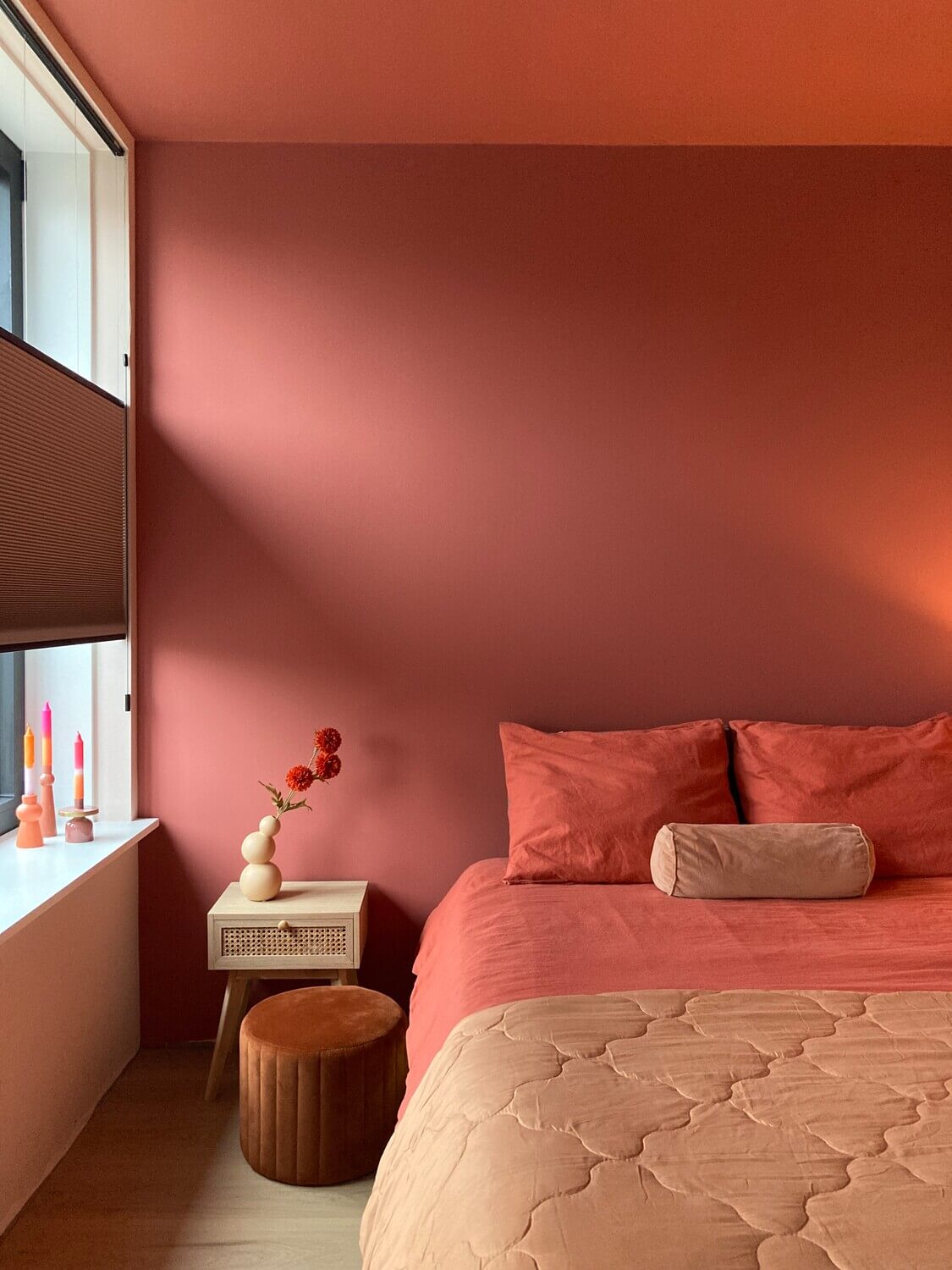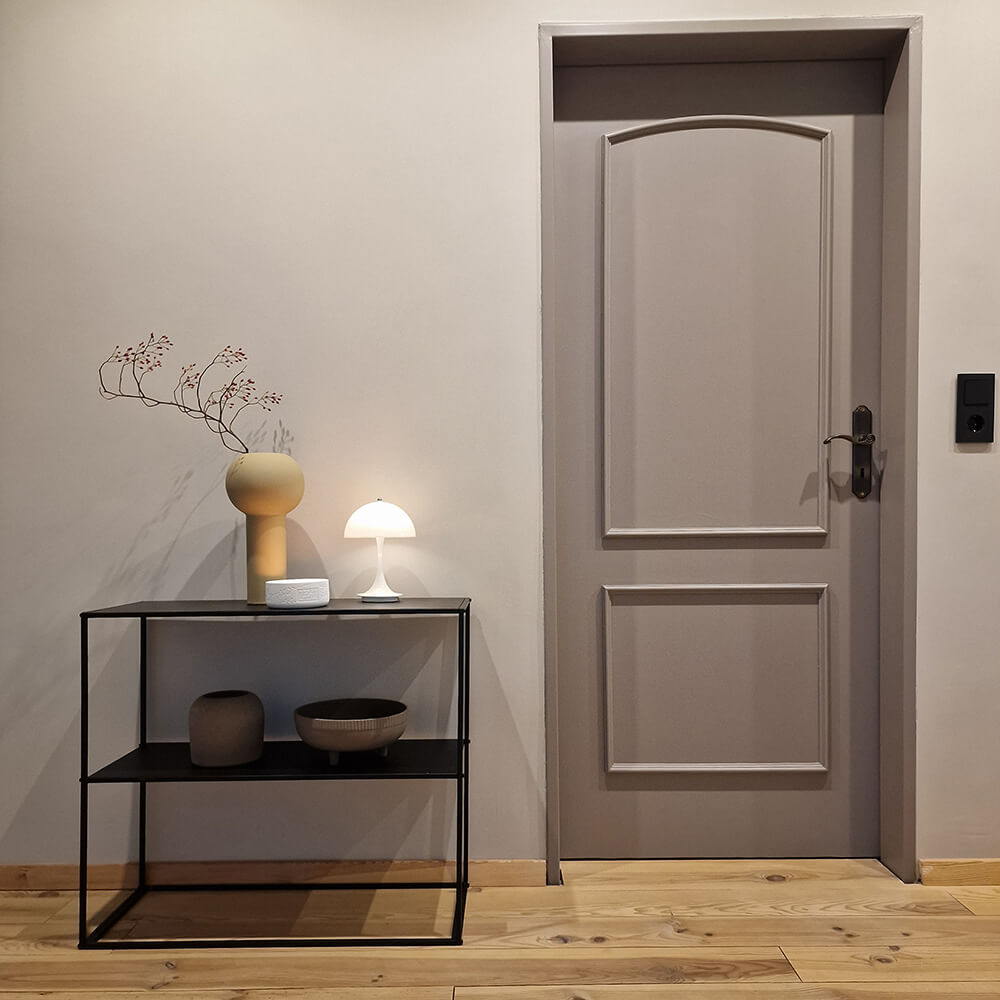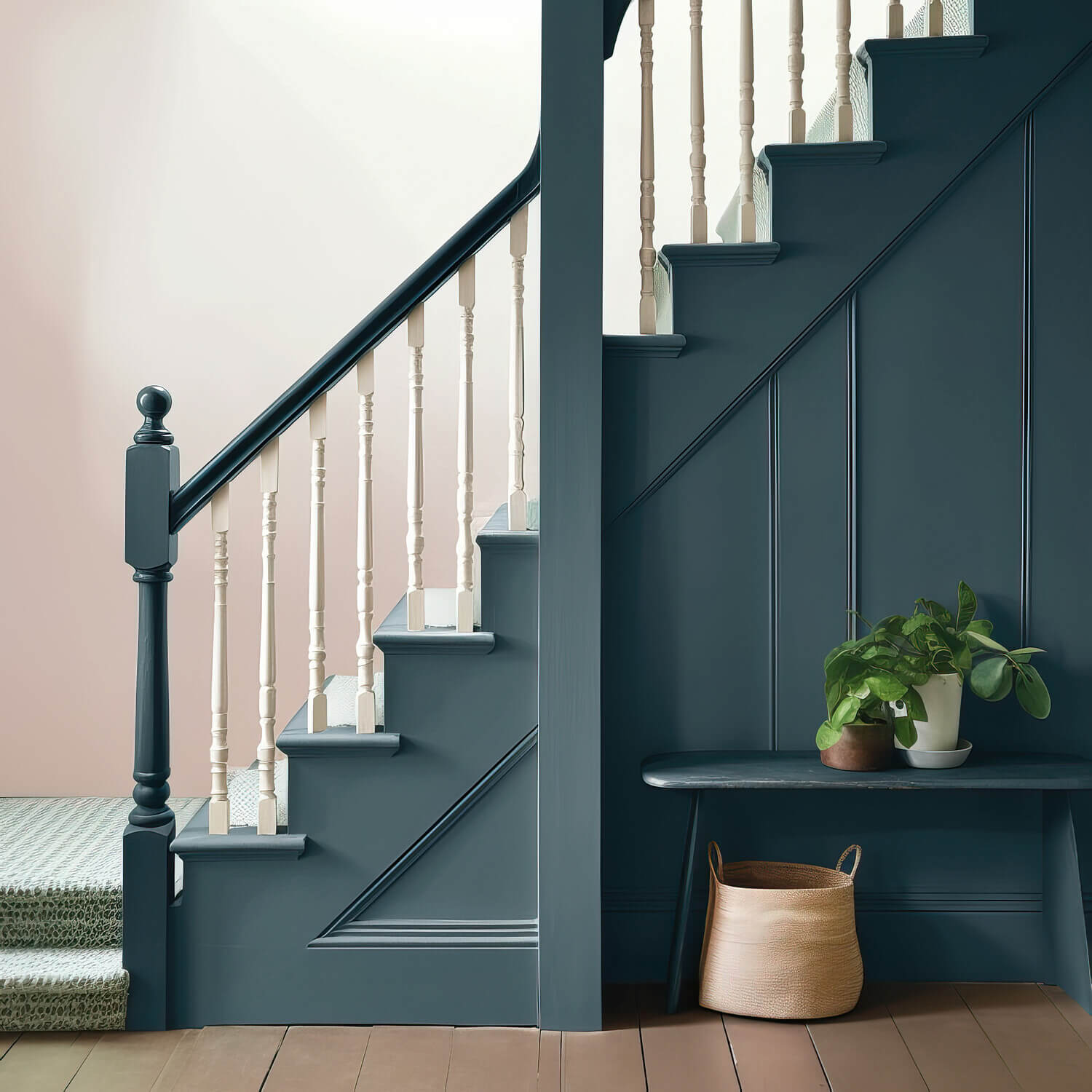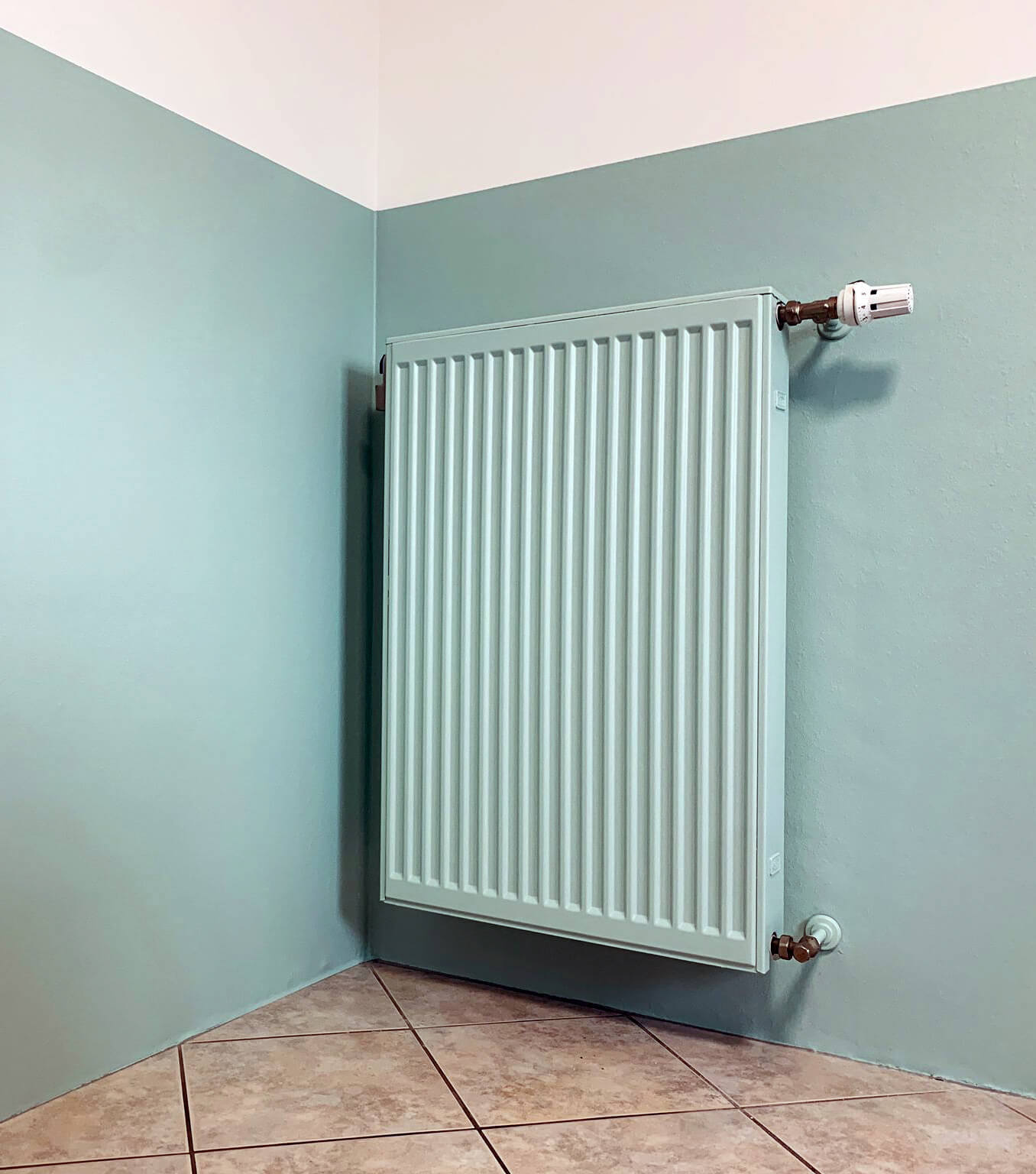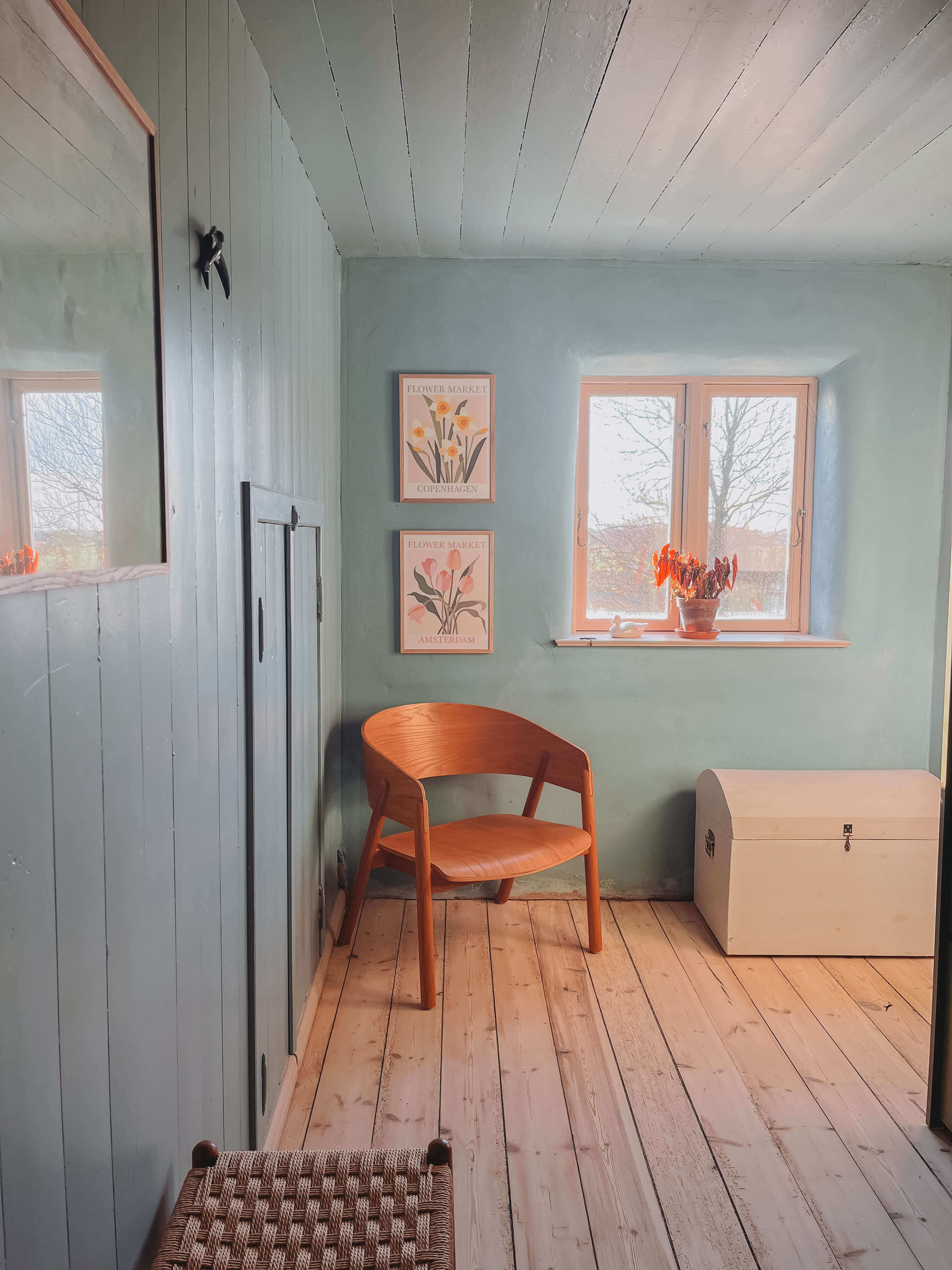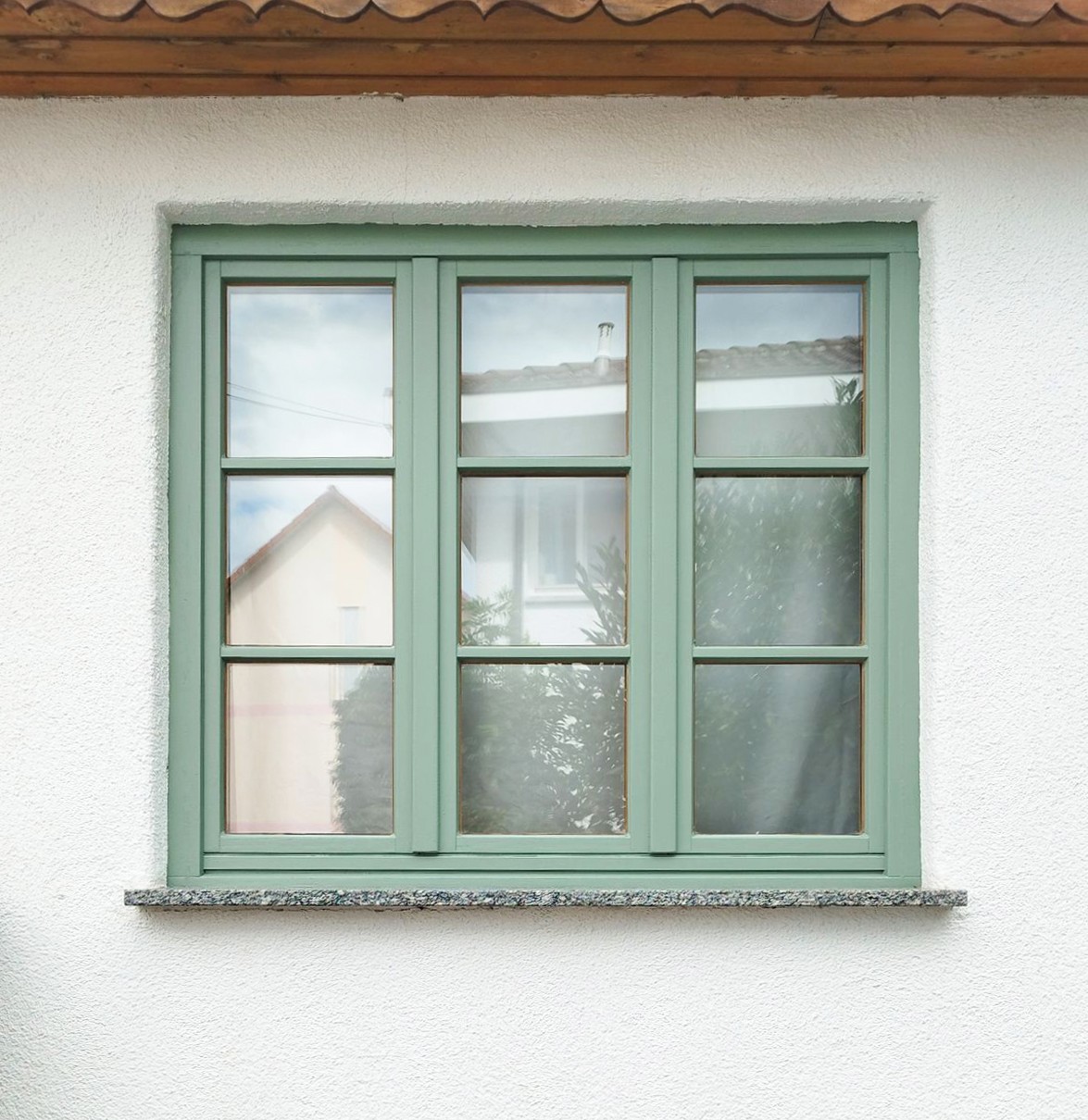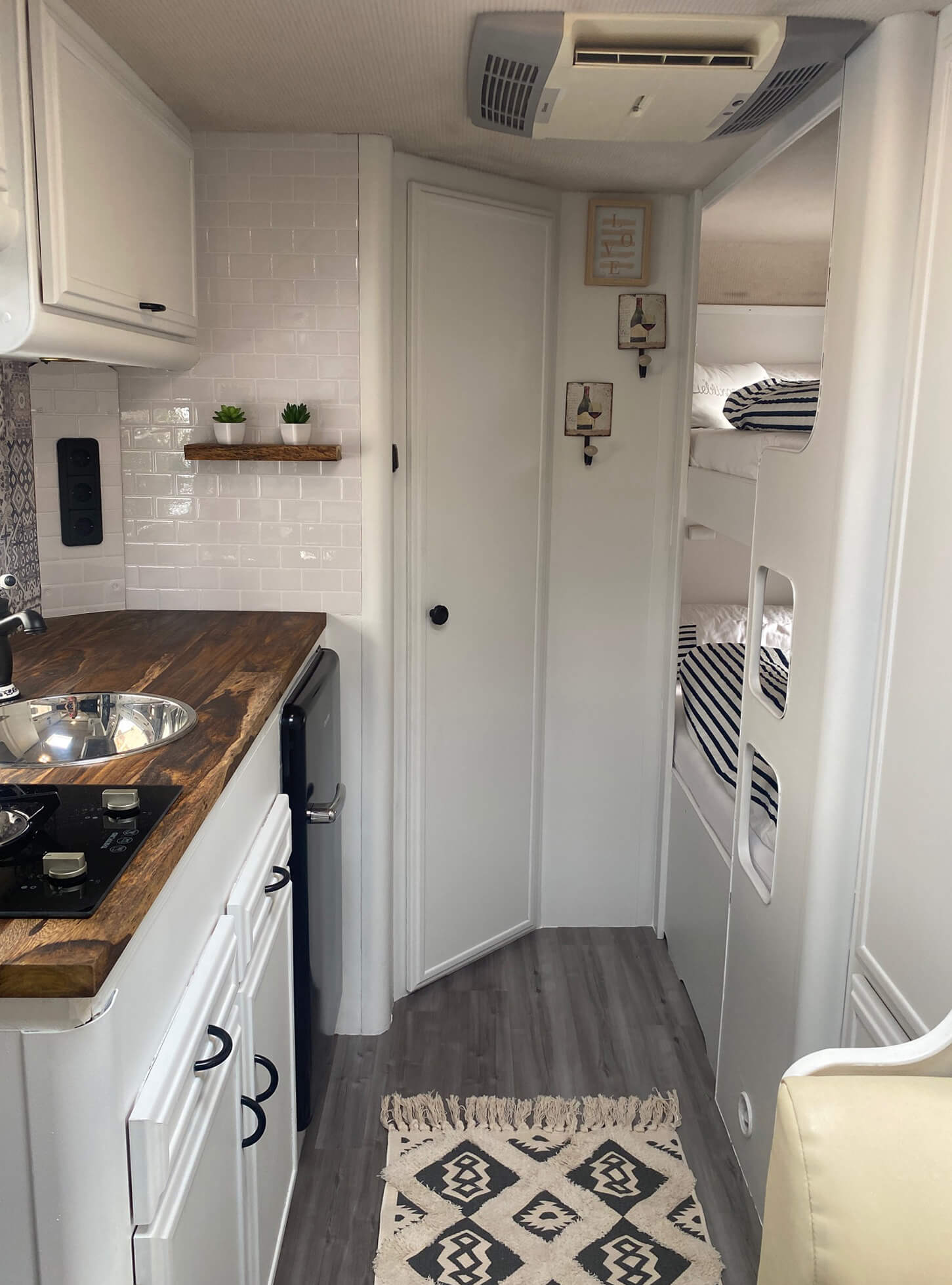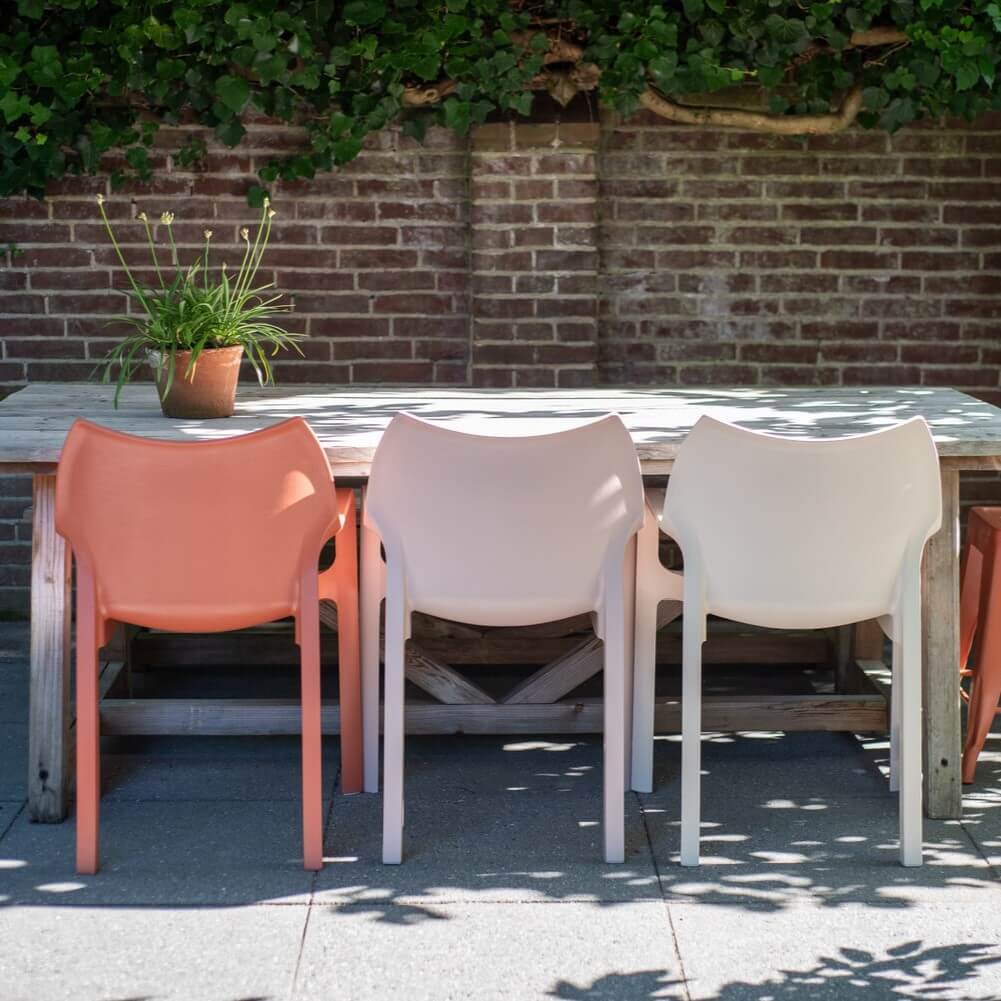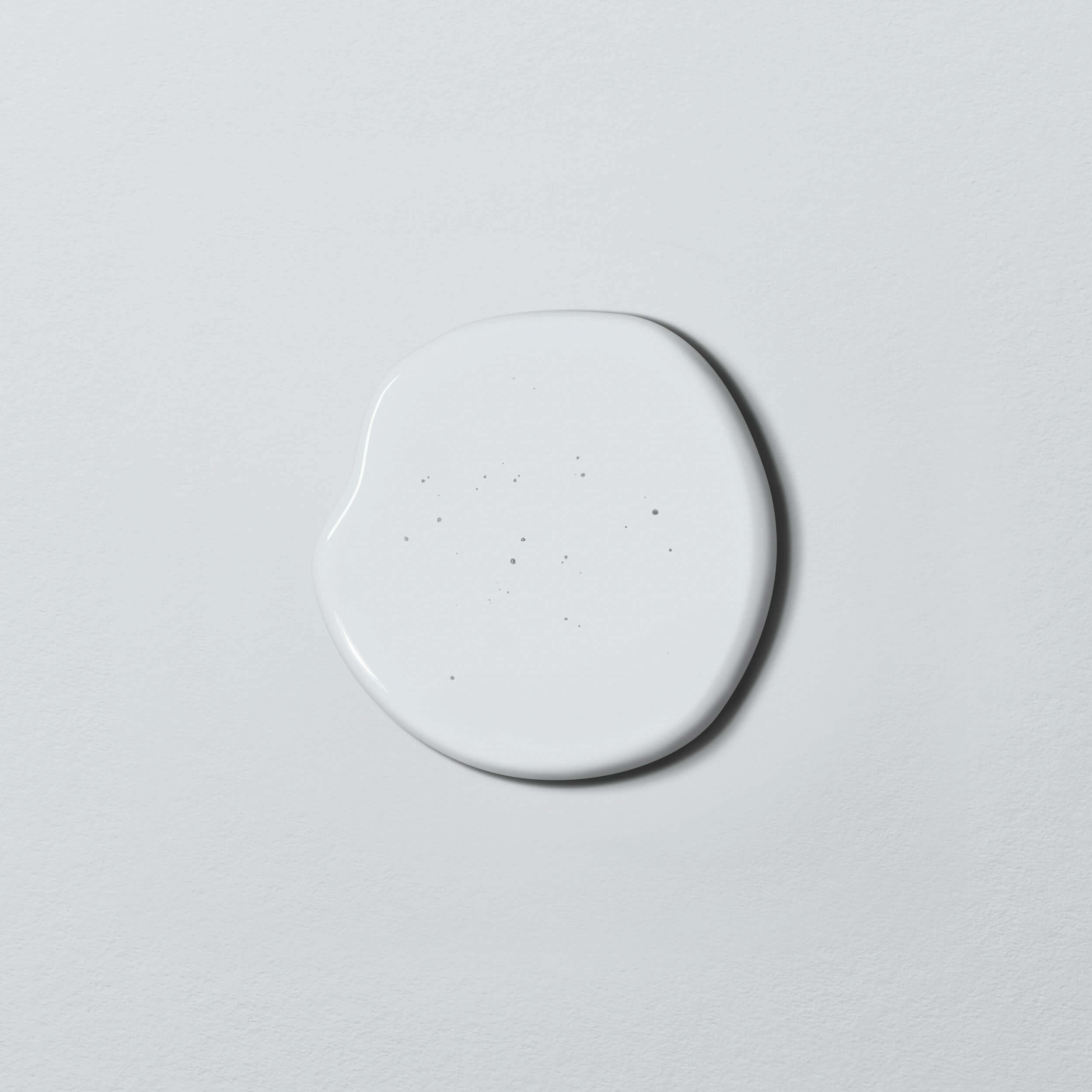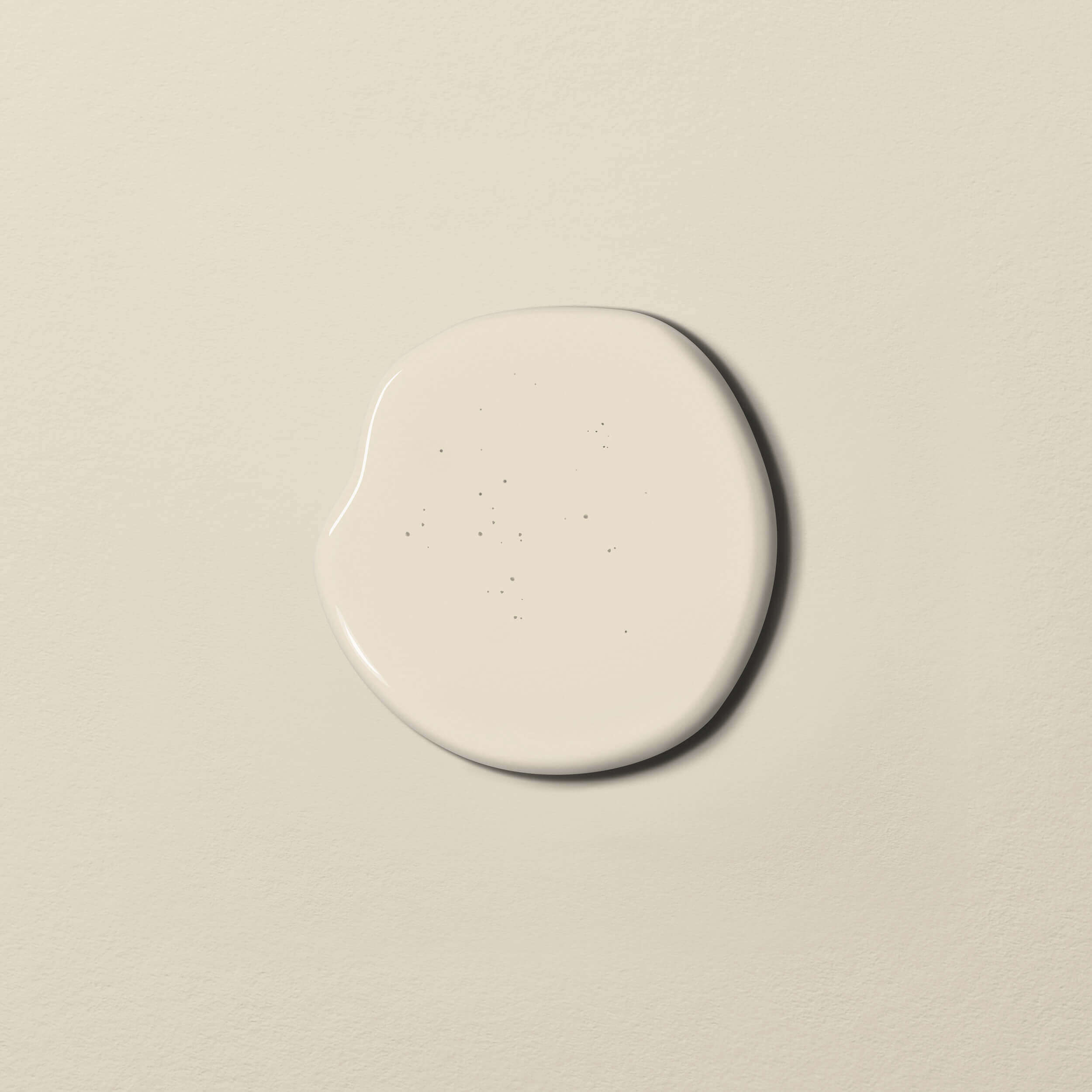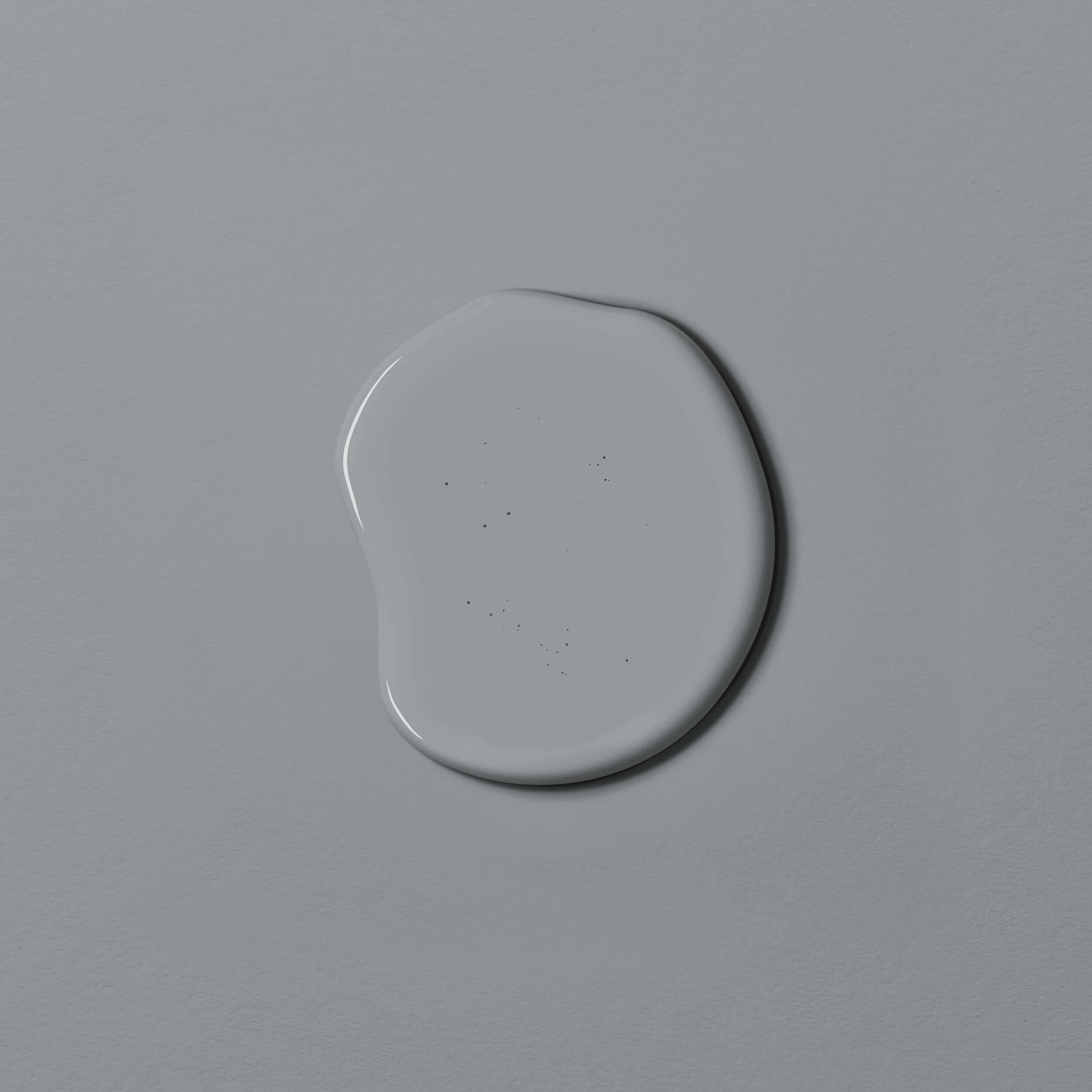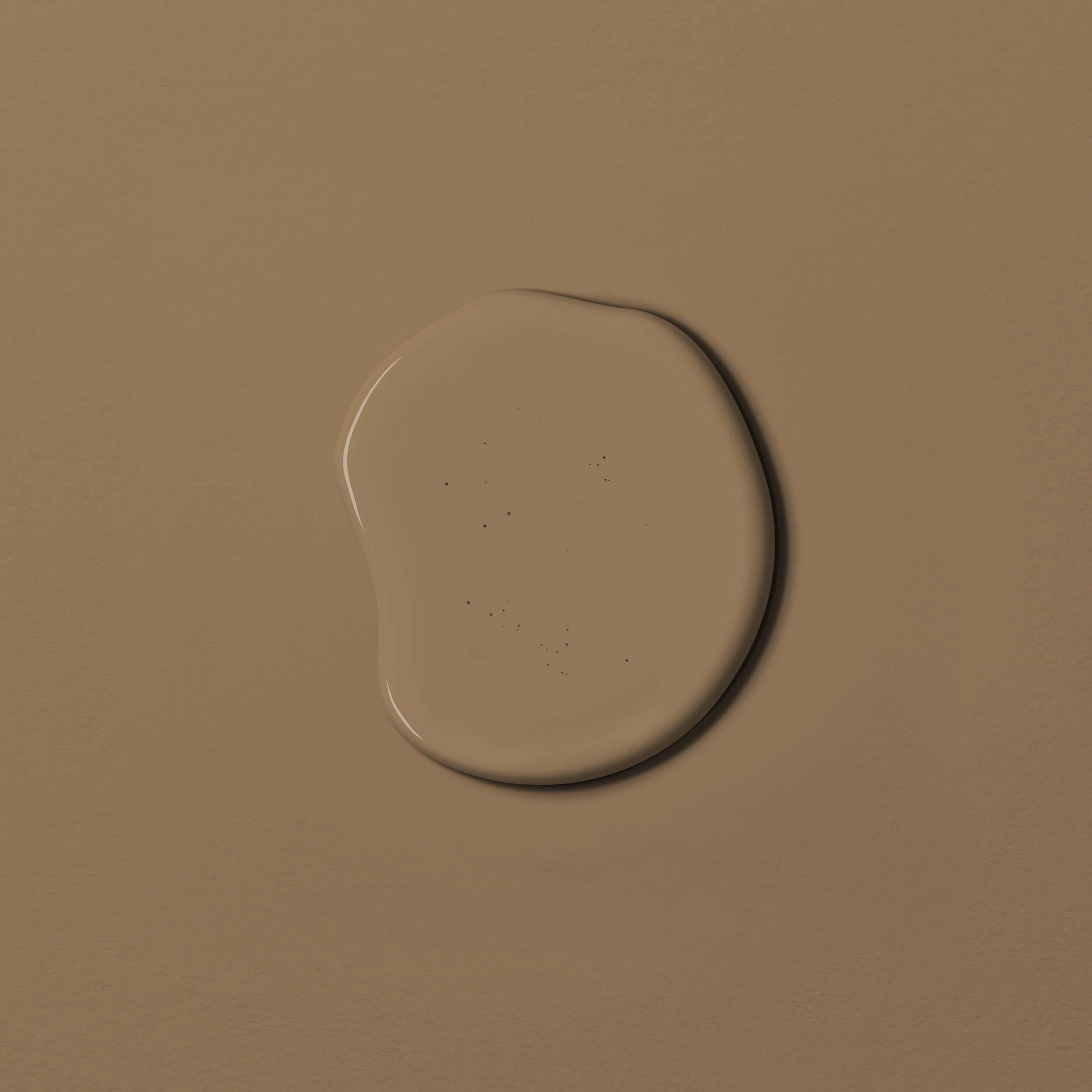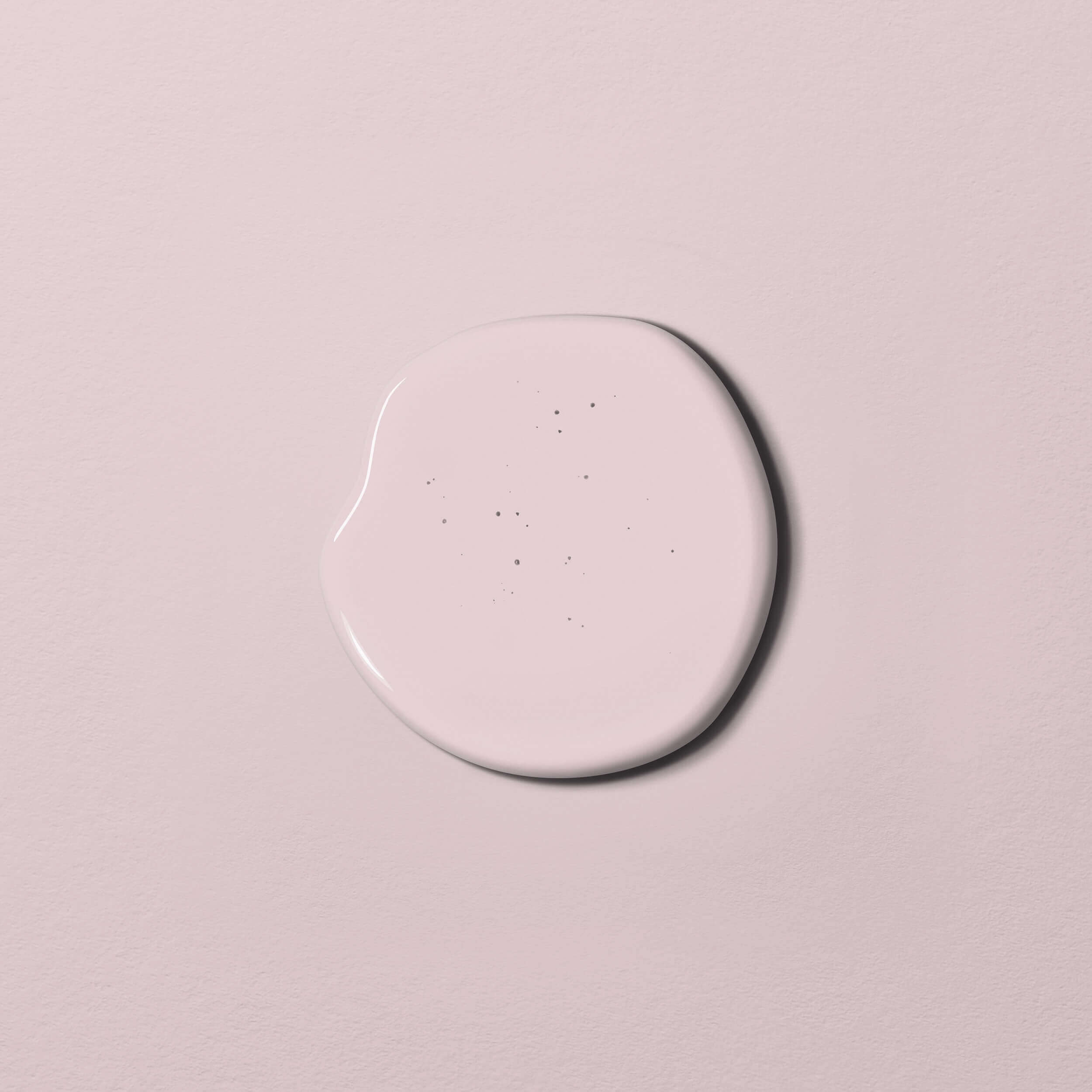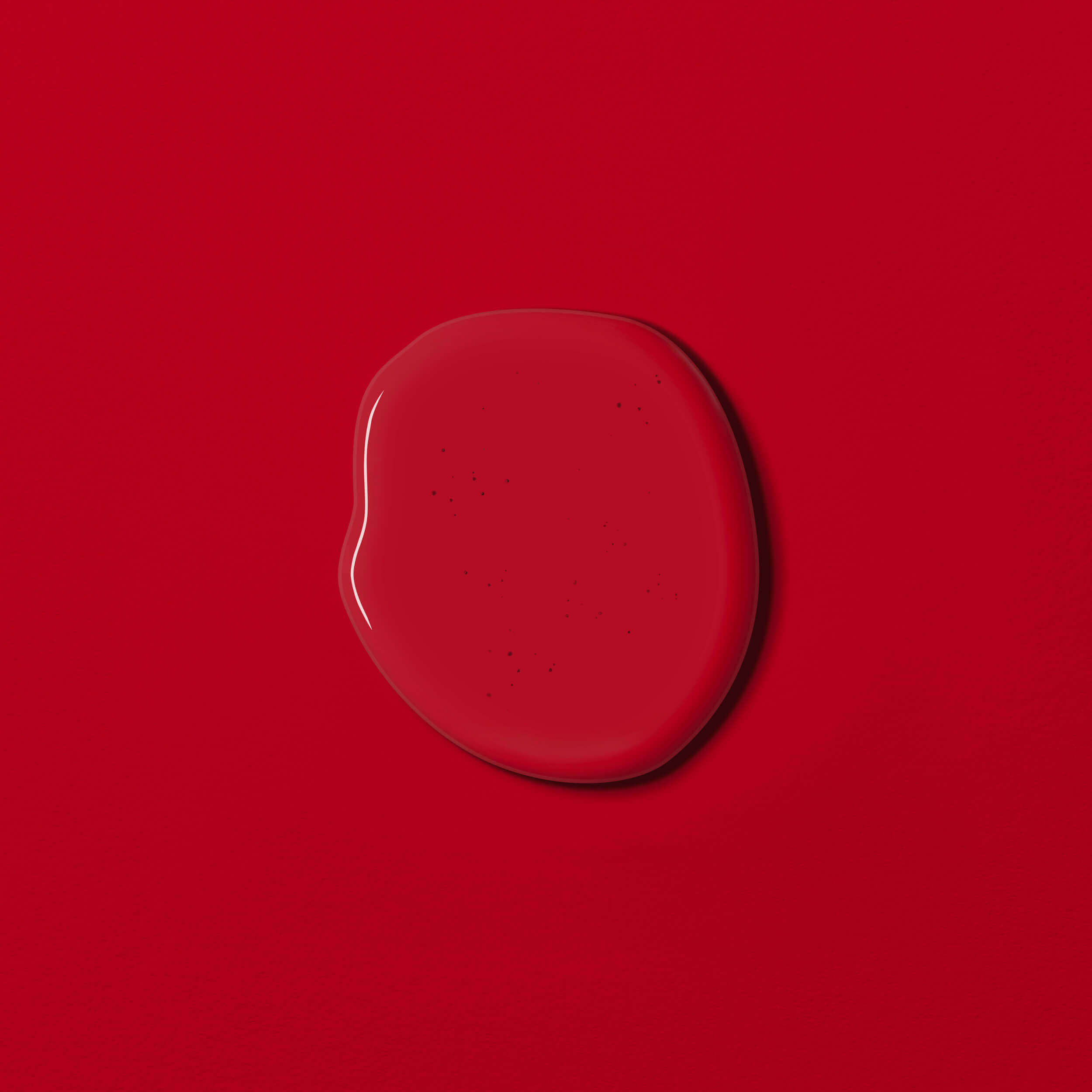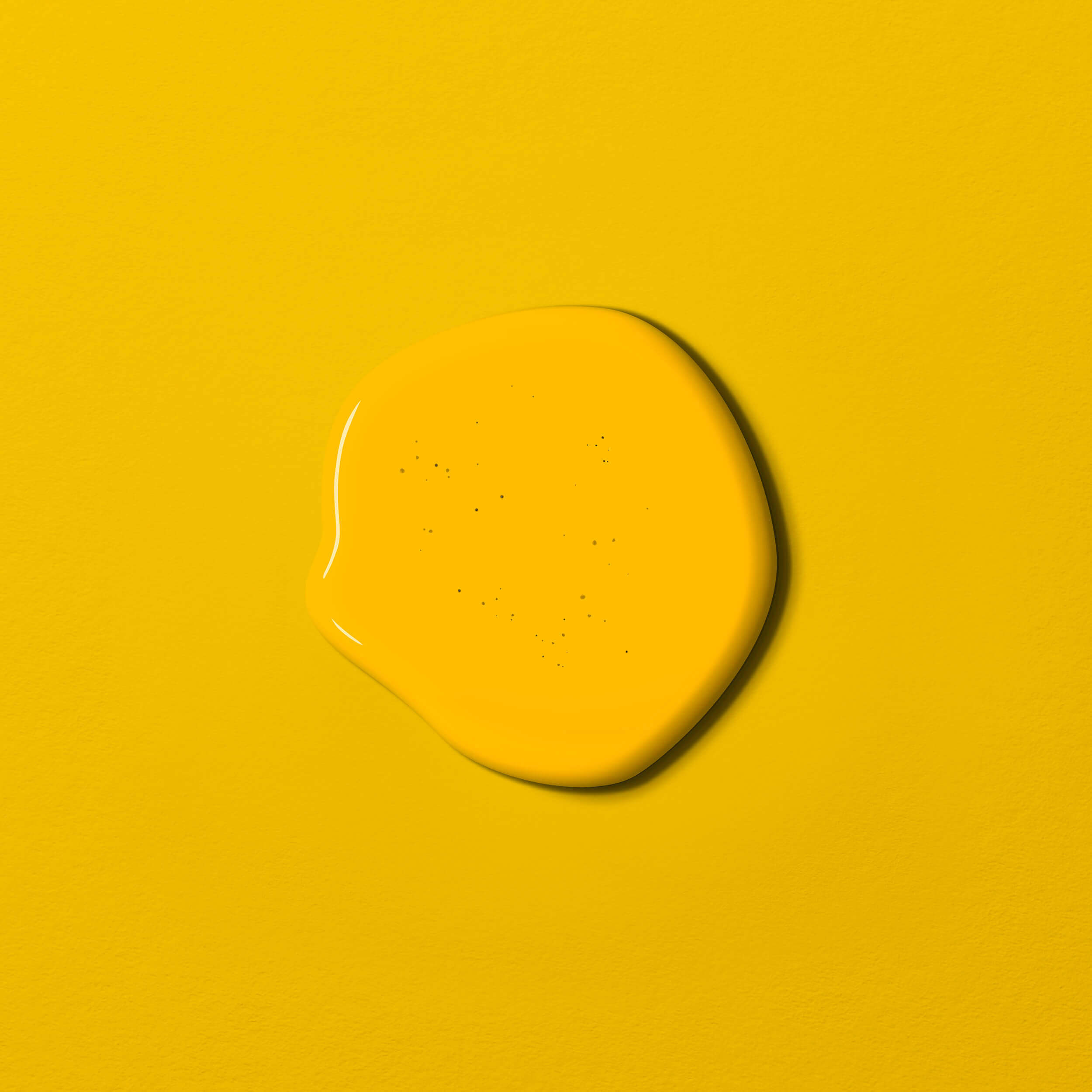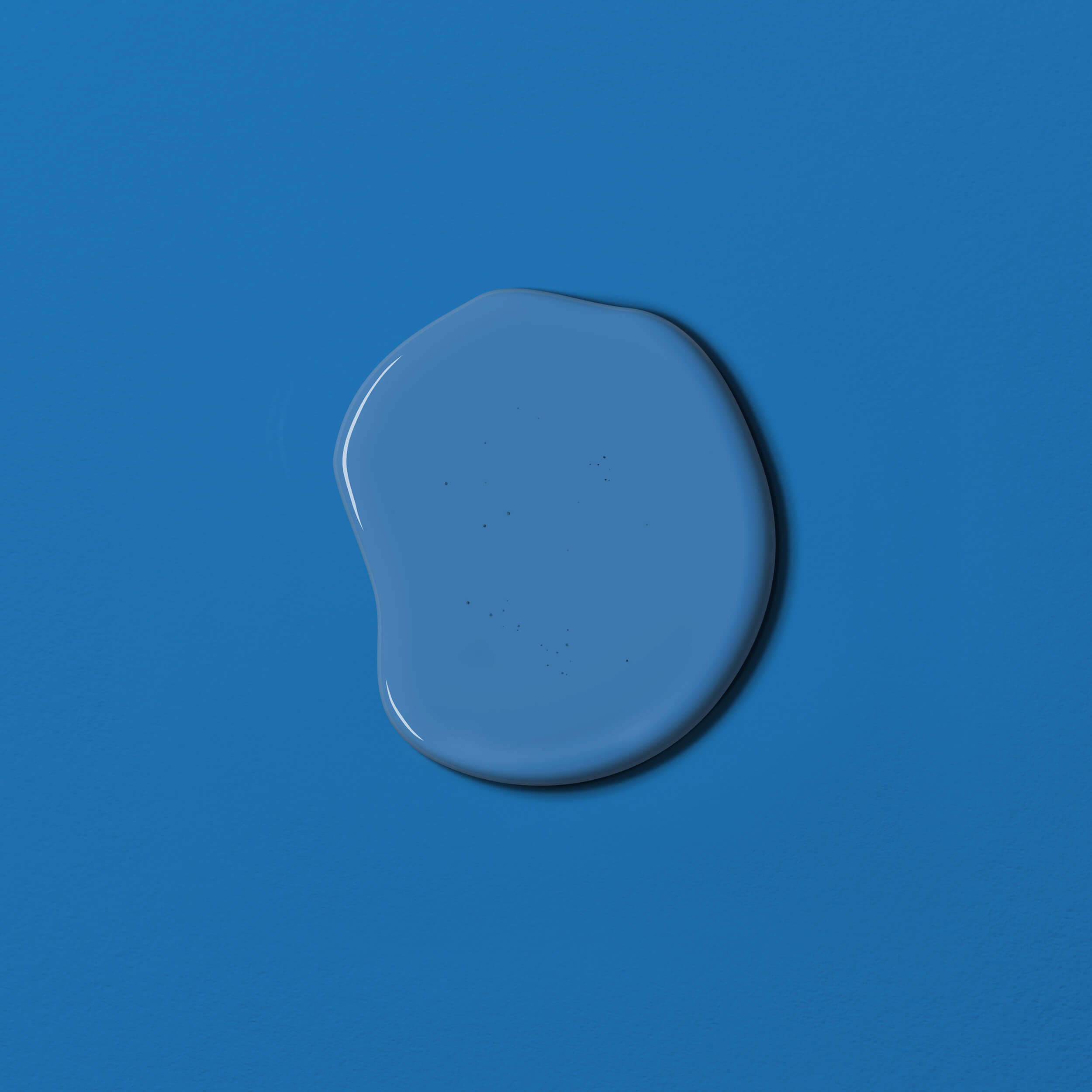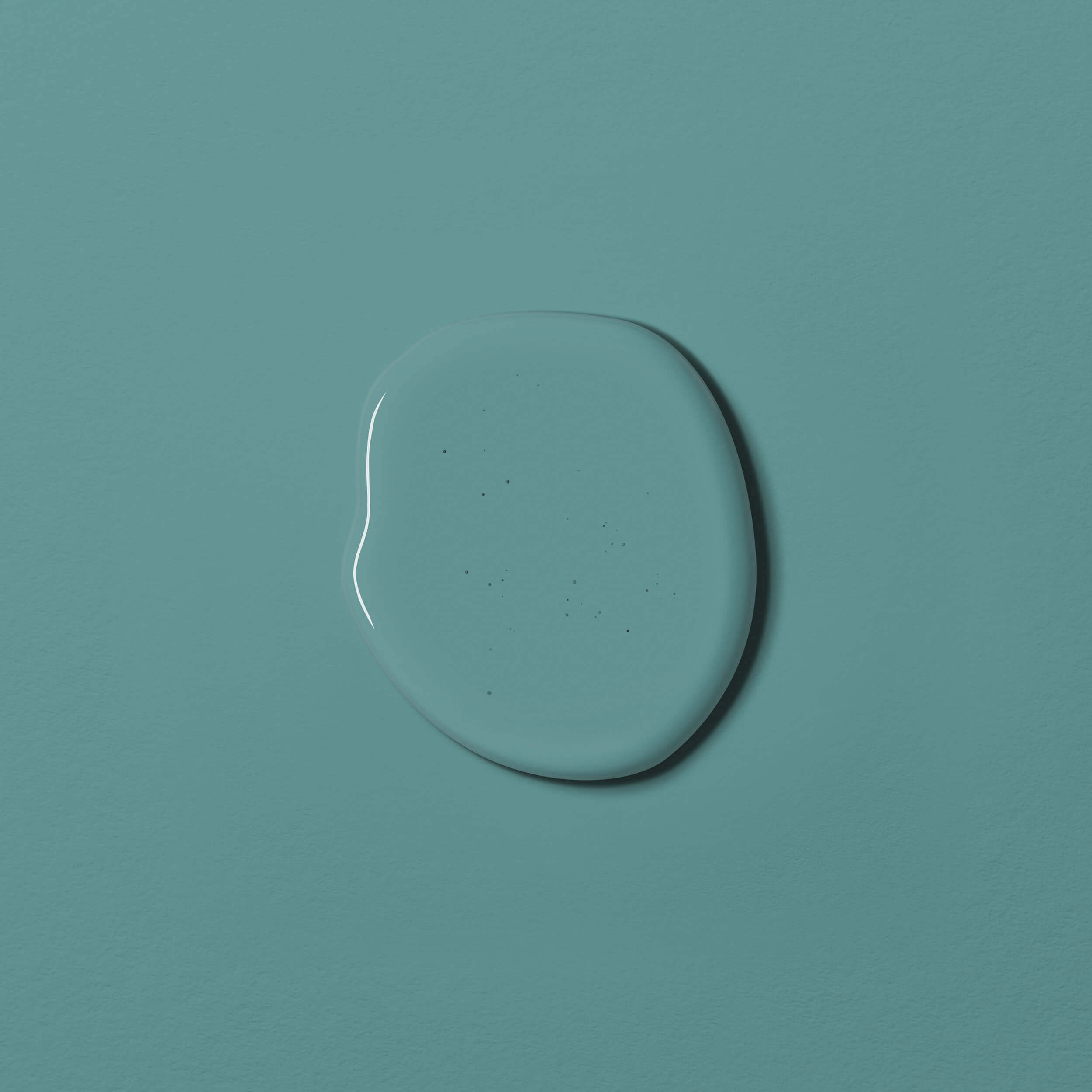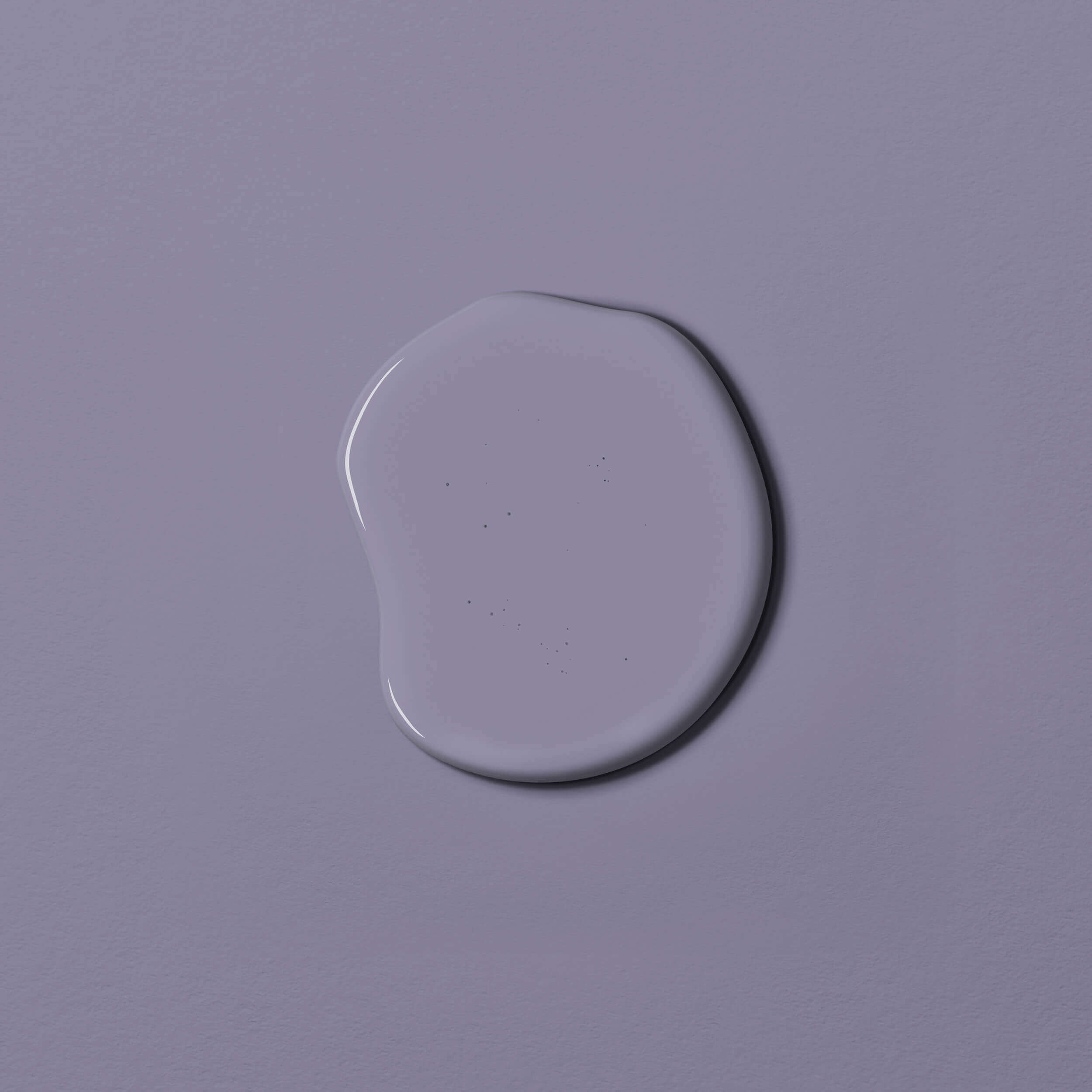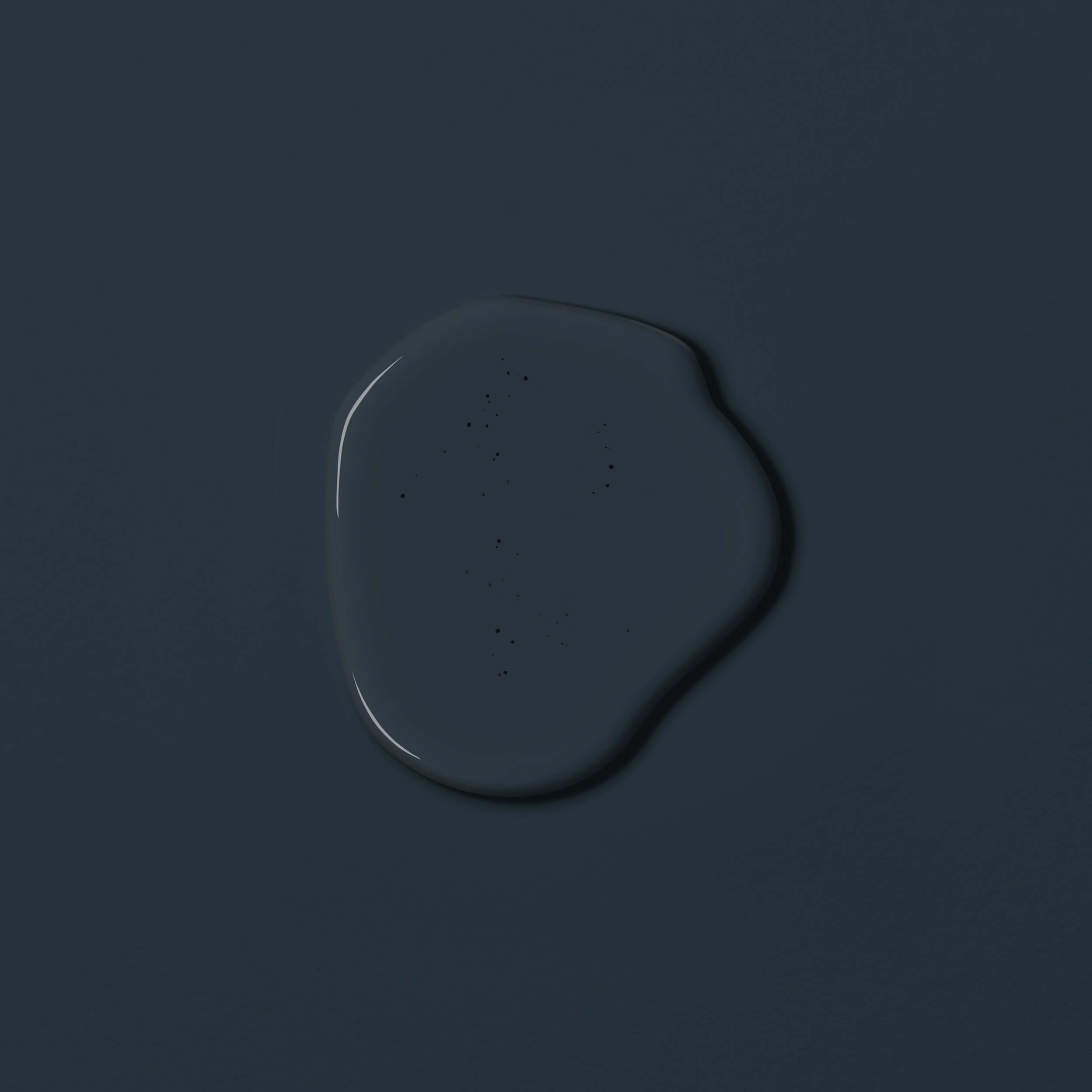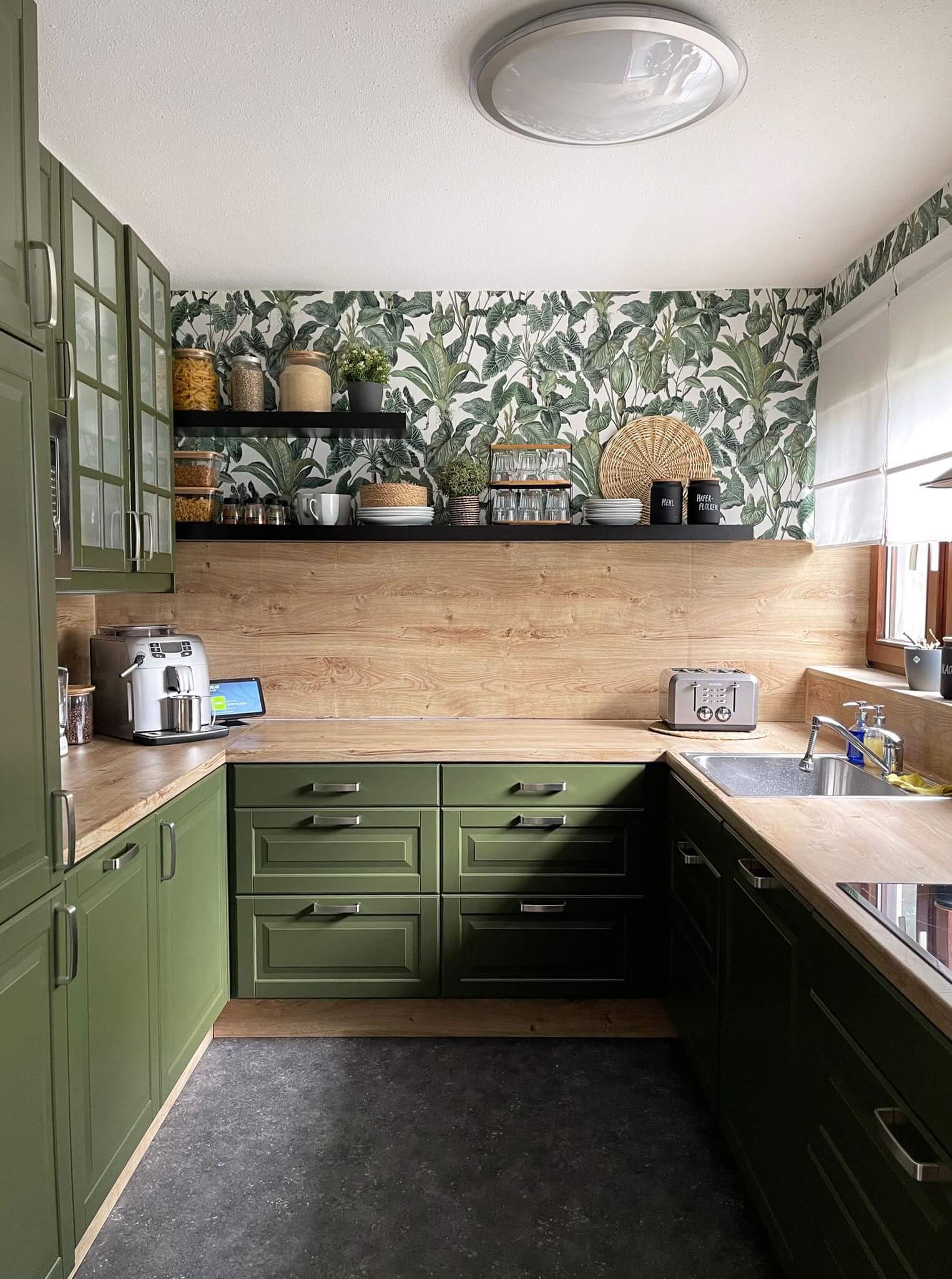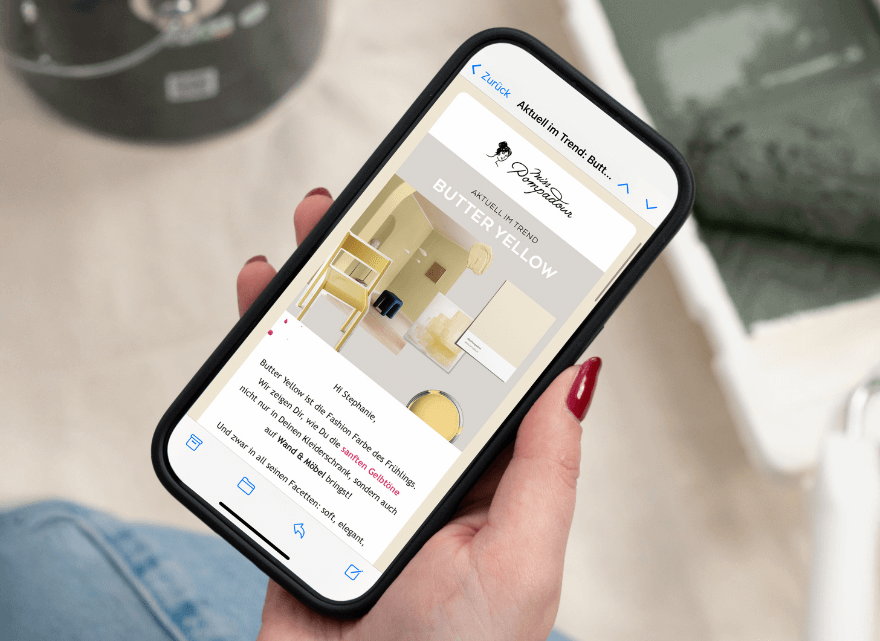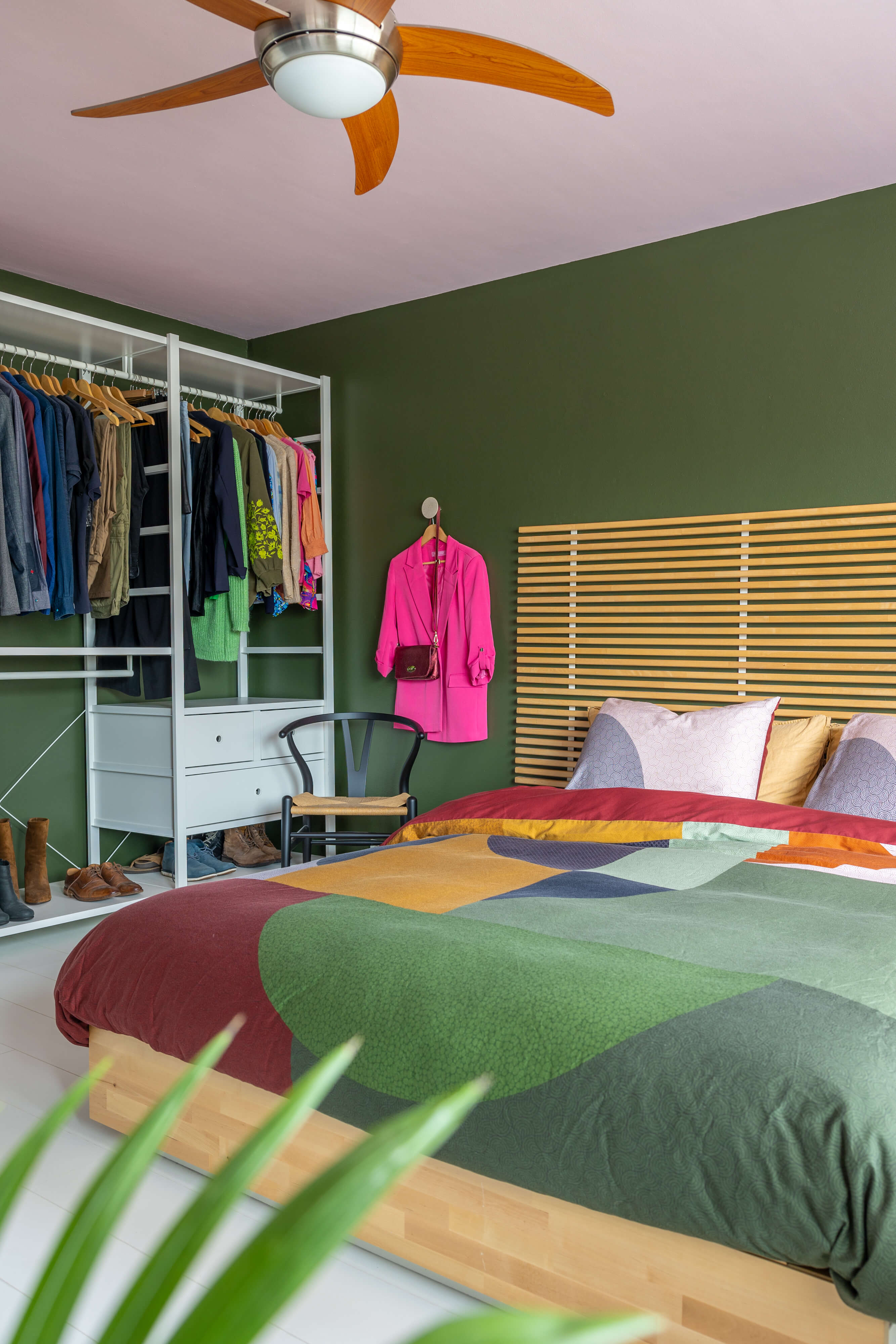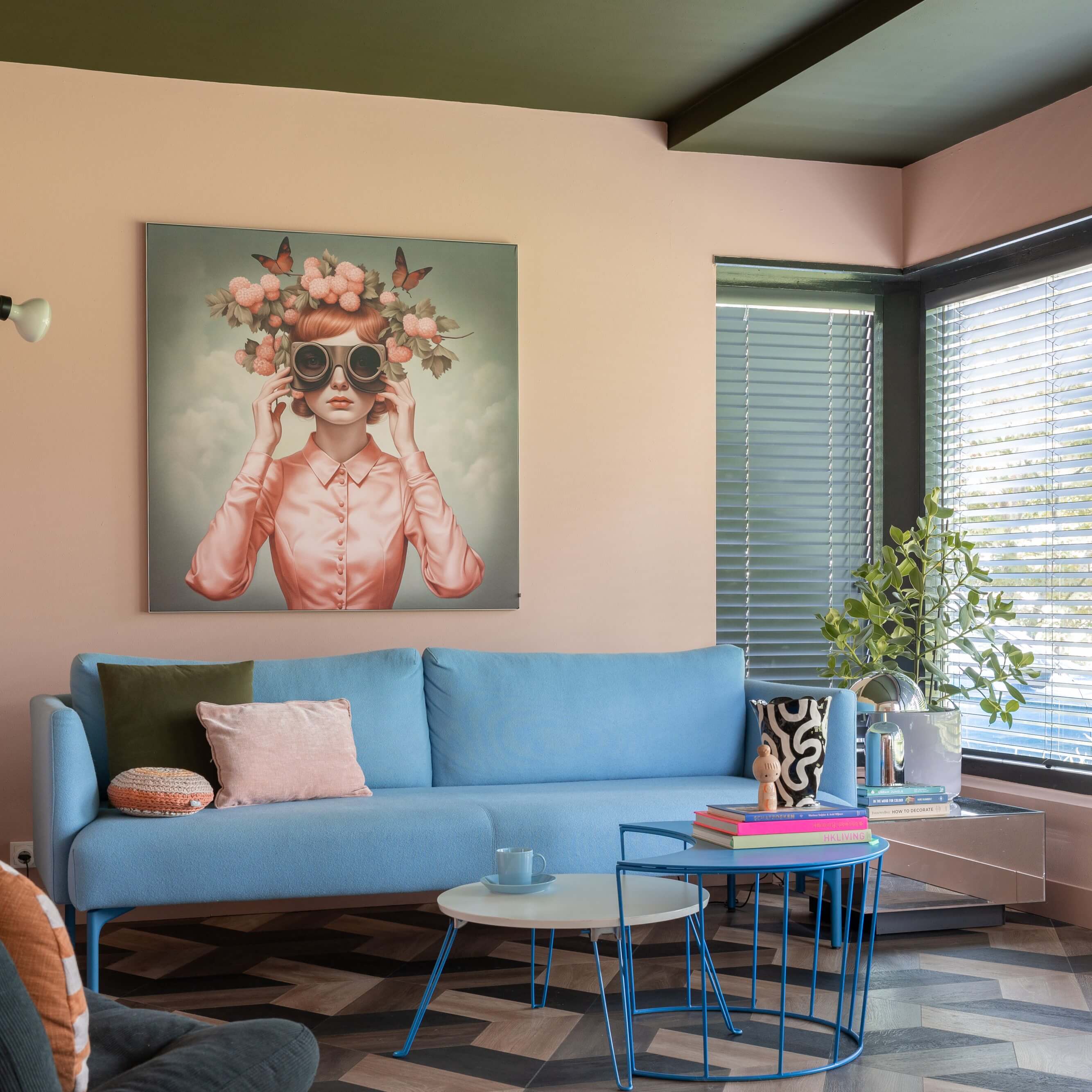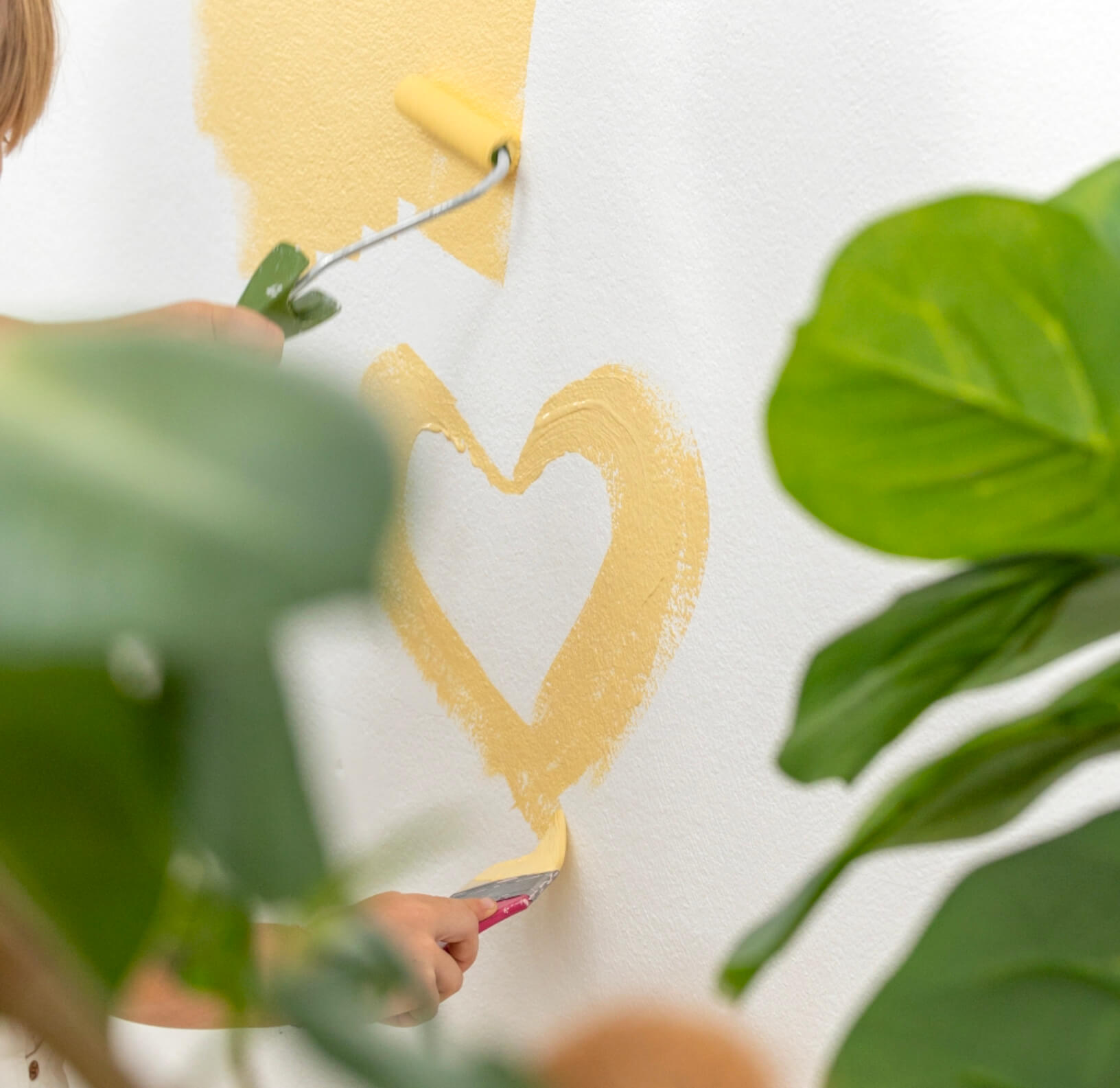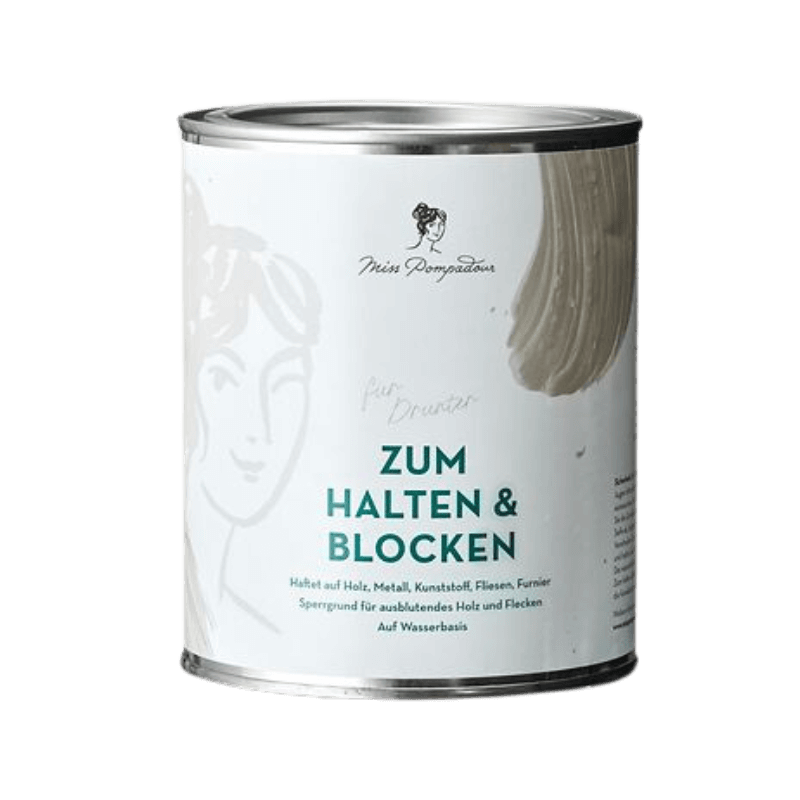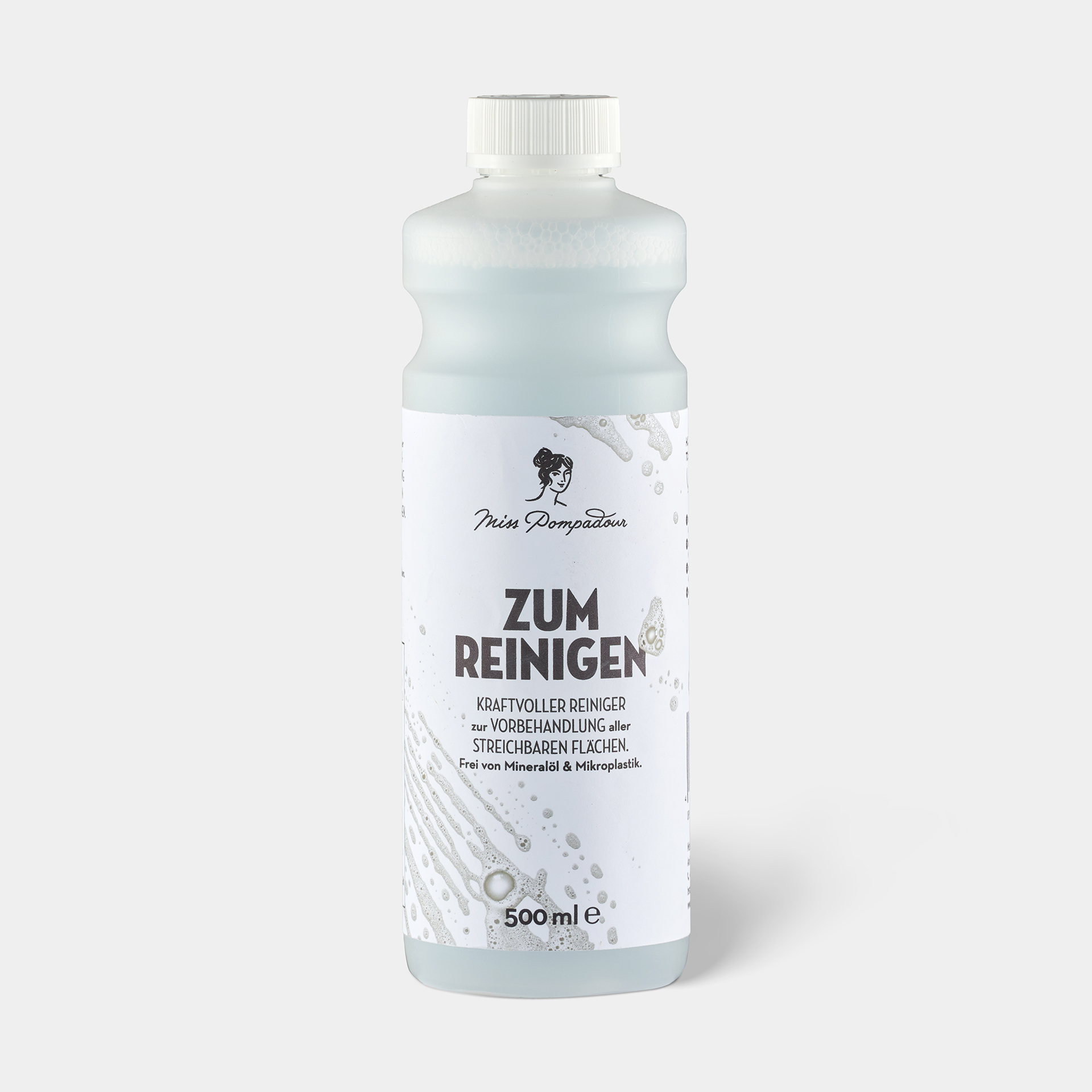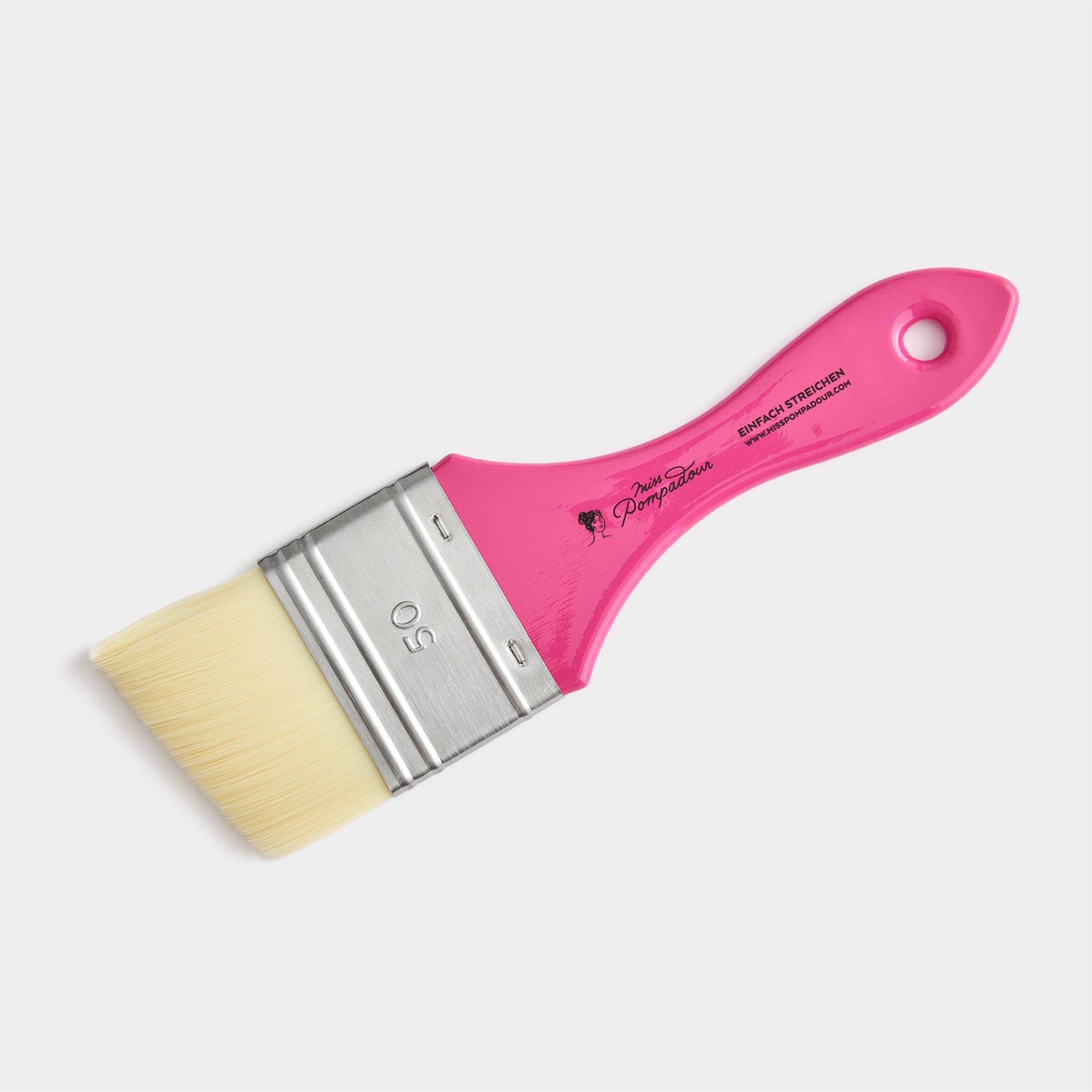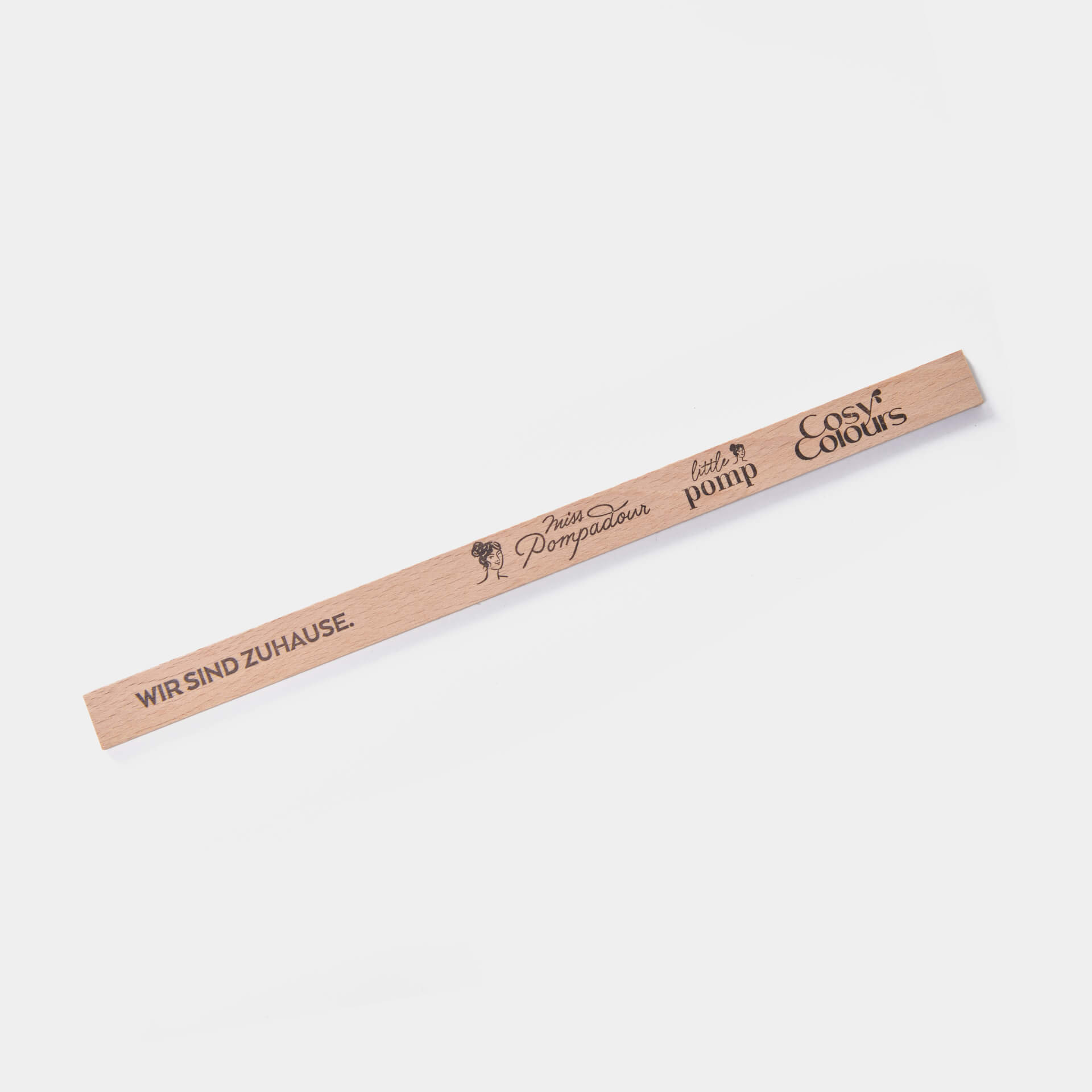- Low VOC & water-based
- Smooth application with good coverage
- Excellent adhesion & blocking effect
- German production
€43.00
Available, delivery time: 2 to 4 Working days
Very popular product: Bought over 7983 times during the last weeks
Application instructions
Always use primer with clean tools and do not mix with other products. Do not use alkaline cleaners (soda cleaners, leaching agents).
What do you want to use To Bond & Block for?
Your area of application
- Barrier effect for bleeding woods (oak, tropical woods, softwoods, stained woods and others)
- Isolates water stains and other stains on wood and walls (nicotine, soot, blood...)
- Ideal preparation for perfect painting results
Drying time
The barrier effect is achieved after 8 hours. For the best result, we recommend that you paint over the primer within 48 hours. If the substrate is highly absorbent or the first coat of primer is discoloured, a second coat must be applied. Wait another 8 hours.
- High-gloss substrate or very smooth varnish layers
- Stone-like substrate
- Glass & tiles
- Plastics (especially rigid PVC)
Drying time
The primer can be painted over after approx. 3 hours. For the best result, we recommend painting over the primer within 48 hours.
- Coated metal and non-ferrous metals (aluminium, copper, zinc...)
- Anodised aluminium and freshly galvanised iron cannot be painted over
- Uncoated iron must be prepared with a rust protection primer
Drying time
The primer can be painted over after approx. 8 hours. For the best result, we recommend waiting overnight and painting over the primer within 48 hours.
Instructions
- Masking (optional) & cleaning: Remove grease, dust and dirt from the substrate and mask off everything that you do not want to prime. The substrate must be stable and free of grease and other separating substances, please note that the preparation always differs depending on the project.
- Open the can carefully: Carefully remove the clips on the lid with our paint can opener or use a spatula or screwdriver. Bend the clips away from the bottom upwards. If you bend the clips away from the top of the can, they will pop less. Please note that the clips are under tension and hold your hand over them when removing them. To Open the can, it is best to use a paint can opener.
- Stir: Stir the primer carefully.
- Pouring: Pour a little into the paint tray. Do not work directly out of the can to keep the contents clean.
- Wet the roller or brush: Then wet the roller all around and lightly roll it out in the tray. Make sure that the roller is completely and sufficiently wetted with primer. It should no longer have any dry patches. Immerse the brush up to approx. half of the bristles.
- Apply the primer & allow to dry thoroughly: Apply the primer generously and evenly. However, the primer does not have to be opaque and may look a little wild. Avoid rolling over surfaces that are already dry. For corners, joints or mouldings, use a brush and roll directly wet-on-wet with the roller. For decorative mouldings and narrow areas, use our small pink brush and finish immediately with the roller. Observe the drying time recommended for your substrate or leave the primer to dry overnight.
Technical information
- no dilution necessary, ready for use; possibly max. 5 % water (dilution reduces the barrier effect)
- Clean tools with water
- 7 °C to 30 °C ambient and substrate temperature
- approx. 10m²/l, depending on the absorbency of the substrate
FAQ
What does adhesive and stain block mean?
As To Bond & Block combines the properties of an adhesive and a stainblock, it is suitable for a wide variety of substrates: It creates an even surface on very smooth substrates such as tiles or plastic, to which the paint can adhere well. On wood, To Bond & Block prevents the bleeding of tannins from wood, the bleeding through of nicotine discolouration or old stain. Dark knotholes and other discolourations are covered so that your coat of paint can develop its full effect.
Do I have to sand off the old varnish before priming?
How do I use To Bond & Block?
As always, the most important thing with all preparatory work is to clean the surfaces to be painted thoroughly. The mild, environmentally friendly MissPompadour To Clean is particularly suitable for this. To Clean - Cleaner, paint a rich, well-covering coat of To Bond & Block. Important: If you use the primer on smooth surfaces, you can paint over it after approx. 3 hours. For the blocking effect to work fully, wait at least 8 hours or overnight when painting on wood or stains. Make sure to clean your brush or roller very thoroughly between primer and paint or use a different tool directly.
How do I apply To Bond & Block to wood?
Some woods contain natural tannins that can dissolve during painting and change your colour shade. This is often the case with oak, but also with softwoods and various tropical woods. Old pieces of furniture are often stained. The stain can also come off during painting and bleed into the new coat. With To Bond & Block, you are always on the safe side and create an even, milky-white base without stains and knotholes for your coating. For the blocking effect to work properly, it is important that there is no wax or other separating substances on the wood. Paint To Bond & Block well and allow your primer to dry for approx. 8 hours. If the substrate is highly absorbent or the first primer coat is discoloured, apply another coat!
How do I apply To Bond & Block to metal?
First prepare uncoated iron and rusty metal with a rust protection primer. The rust must be thoroughly removed before priming. Once the rust protection primer has dried, apply To Bond & Block. Your surfaces are then reliably protected against further corrosion. After approx. 3 hours drying time, you can apply your paint. For rust-free, coated iron and non-ferrous metal, you can use To Bond & Block directly and do not need a rust protection primer.
How do I apply To Bond & Block to tiles, plastic, glass and other very smooth surfaces?
Here too, you should clean the surfaces to be painted so that they are both dust-free and absolutely grease-free. This is particularly important when painting kitchen furniture. The vapours that form in the kitchen are invisible on every surface. Once all surfaces have dried, stir the primer well and apply it to the surface in a well-covering layer. To Bond & Block ensures that a non-slip layer is created to which your colour can adhere well. You can even paint high-gloss lacquered kitchen surfaces in this way. Allow To Bond & Block to dry for approx. 3 hours at a room temperature of approx. 20°C before painting. On tiles and other very cold surfaces, it is better to wait a day before you start applying the paint.
Can I also prime walls with To Bond & Block?
The insulation and stain block from MissPompadour also allows you to paint difficult walls. Especially in an old building, it can happen that a wall has indefinable stains that cannot be completely covered with wall paint. These are usually old traces of grease from soot, water stains or similar. You should cover these stains with To Bond & Block. Apply the primer to the stains with a roller. Leave To Bond & Block to dry on the wall for at least 8 hours. As To Bond & Block seals the wall tightly, we do not recommend priming entire walls. However, it is the right choice for partial stains. Then paint the wall as usual with the wall paint.
Is To Bond & Block water-based?
To Bond & Block is water-based, as you would expect from our products. Brushes and roller brushes can be easily cleaned with warm water.

